Long Live Our Noble Queen
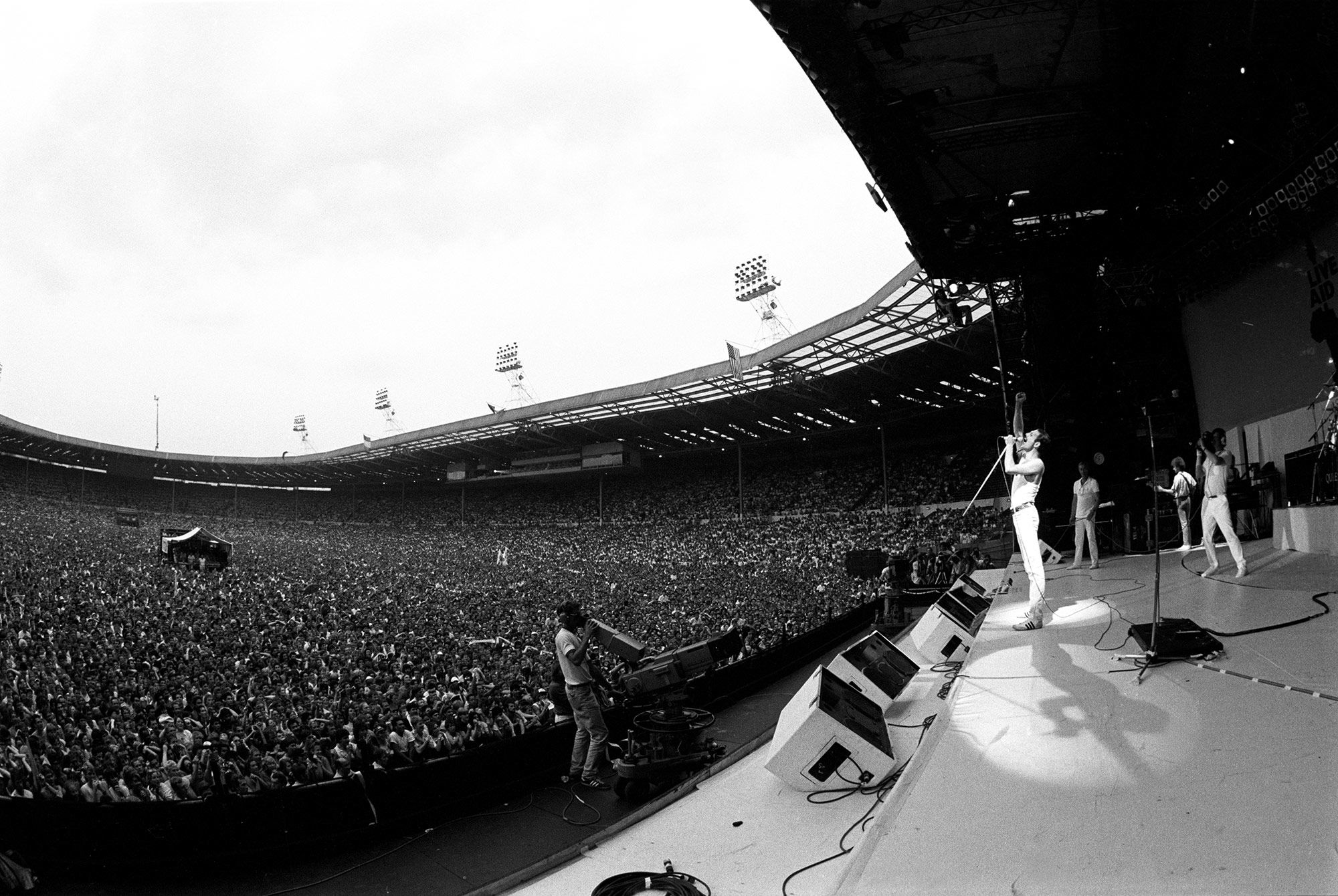
Queen are one of Britain's most influential and innovative rock bands, crafting some of the most iconic songs of the 1970s and 1980s. Their story is filled with groundbreaking musical achievements, electrifying performances, and a tragic yet deeply inspiring legacy. Even after decades, their music continues to resonate with fans around the world, cementing their place among the greatest bands in history.
What set Queen apart was their remarkable lineup of four exceptional musicians and songwriters. While many legendary bands relied on one or two primary songwriters, Queen was unique each member contributed significantly to their catalog of hits. The Beatles had three prolific songwriters and Ringo Starr, but Queen had four equally talented composers. Throughout their career, every band member wrote major singles and defining moments in their discography, a rarity in rock history.
Let's take a look at the journey of one of Britain's most iconic bands, starting at the beginning.
Formation
The founding members of Queen met in London during the late 1960s, a time of musical experimentation and cultural change. Guitarist Brian May had already demonstrated his technical ingenuity by building his own guitar with his father in the early '60s. He formed a band called 1984, named after George Orwell's famous novel, alongside singer Tim Staffell. However, the group was short-lived, as May decided to focus on his studies in Physics and Infrared Astronomy at Imperial College.
While at Imperial College, May formed another band, Smile, with Staffell and keyboardist Chris Smith. To complete the lineup, May placed an advert for a drummer, which was answered by a young dental student, Roger Taylor. The addition of Taylor marked the beginning of what would eventually become one of the most legendary bands in rock history.
At the same time, at Ealing Art College in West London, Staffell befriended fellow student Farrokh "Freddie" Bulsara, a native of Zanzibar with Indian Parsi heritage. Initially studying fashion design before switching to graphic art and design, Bulsara became an enthusiastic fan of Smile. He expressed a strong desire to join the band as their lead singer, though May felt Staffell was unlikely to relinquish the role. Meanwhile, Bulsara was performing with another group called Wreckage, where he was already developing songs, some of which would later become Queen songs.
Bulsara finally got his chance in 1970 when Staffell left Smile due to creative differences. With an open spot for a lead vocalist, Bulsara stepped in, bringing his charismatic stage presence and dynamic vocal abilities. Around the same time, the band welcomed bassist Mike Grose, a friend of Taylor's, and performed their first gig with this new lineup in June 1970. The seeds of Queen had been sown, and a new era in rock music was about to begin.
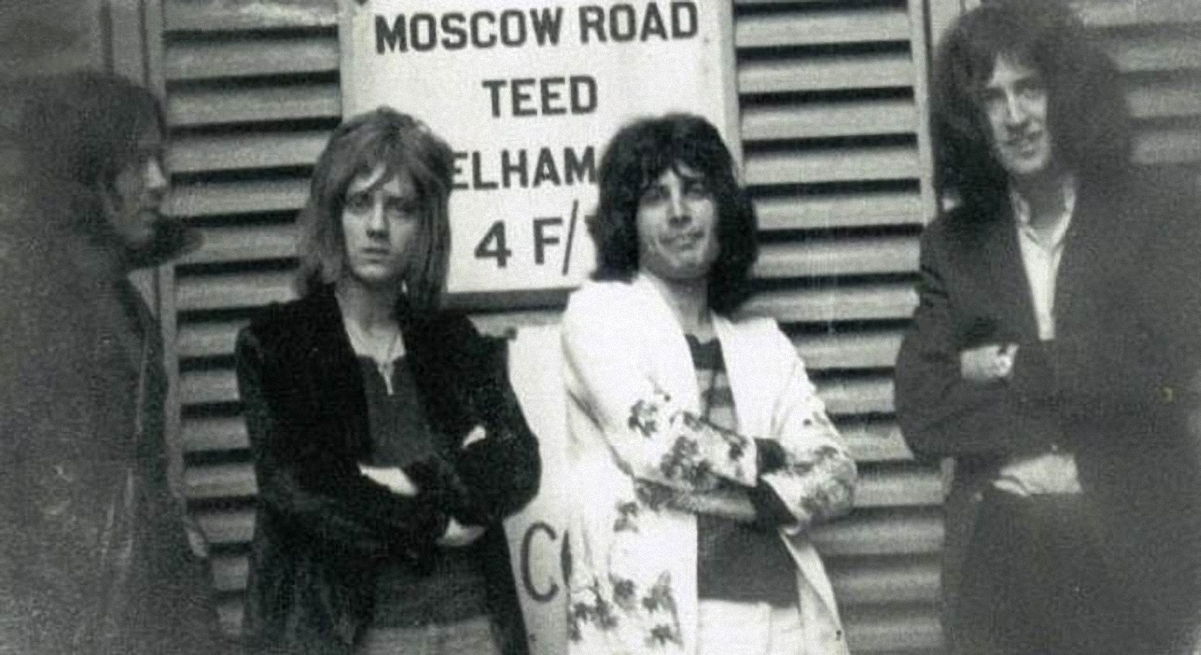
Bulsara suggested a change in name for the band, from 'Smile' to 'Queen'. However the rest of the band were a little apprehensive however Freddie could be very persuasive. He said it's wonderful, dear, people will love it"
The band name wasn't the only thing that changed. Freddie decided to change his surname to Mecury. Inspired by a lyric in one of the bands early songs 'My Fairy King' which would end up making the first album. The group played their first London gig on 18 July. The early set consisted of material that later appeared on the first two albums, along with various rock and roll covers.
Queen were attracting some interest from producers but the line up was not yet completely settled in between August 1970 and January 1971 the band would go through three more bass players. Before in February 1971, John Deacon joined the band.
Deacon was exactly what Queen needed, not only was he an experienced bass player, he also was skilled in electronics. The first gig with the classic Queen line up took place on 2nd July 1971. It wasn't long before the band were in the studio.
Liar- Queen I
Following some gigs together, May called Terry Yeadon, an engineer who Smile had previously worked an recorded with. Yeadon offered the band a session at De Lane Lea Studios, providing the group would help him test the equipment and recording rooms. Queen were not the first choice group to do this, Yeadon has tried to ask The Kinks. However, was unable to get through to anyone on the phone.
Queen agreed to help, and were told they could record some demos. In these sessions five songs were recorded, 'Liar', 'Keep Yourself Alive', 'Great King Rat', 'The Night Comes Down' and 'Jesus. During these sessions two producers John Anthony and Roy Thomas Baker visited the band. 'Keep Yourself Alive' garnered some interest and the two of them began to promote the band to record companies.
Charisma Records offered the band a deal but the group turned them down, when they realised that they would not be a priority. Trident would ultimately get the bands signature in 1972. They managed to tie the band into a recording, publishing and management contract. With this contract the band were paid £60 a week, and allowed access to Trident's studio during off peak hours, to work on their debut album.
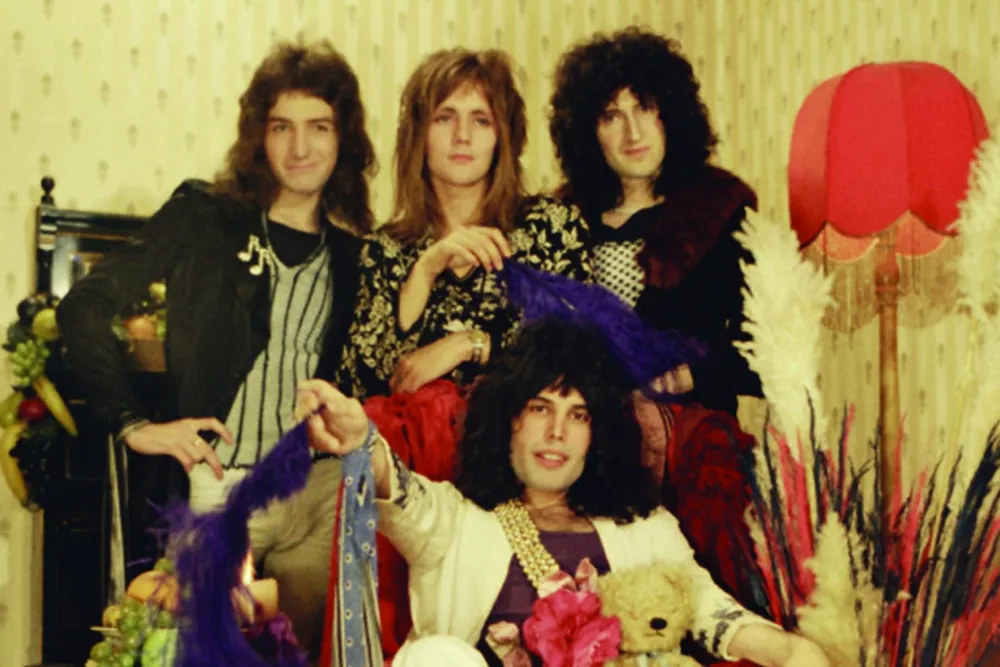
During the sessions at Trident, they saw David Bowie with the Spiders from Mars live and realised they needed to make an impact with the album, otherwise they would be left behind. These sessions ended up causing clashes, in particular with May and the bands producers. The band were inexperienced in the studio and were trying to maximise the studios potential but also trying to maintain the raw live sound.
Resulting in an album that is really mixed in sound, progressive but also heavy. The band eventually finished the album after the infighting and some tracks such as 'Mad the Swine' being dropped from the albums running order entirely. In January 1972 the band had finished the album but were still unable to attract interest from record labels. A showcase gig was booked at The Pheasantry followed by a gig at London's Marquee Club. Still no one took any interest.
The band promoted the still unreleased album on BBC Radio 1 in February 1973 still as an unsigned band. In March Trident managed to strike up a deal with EMI Records. The albums first single 'Keep Yourself Alive' was released in July 1973 with the album also released in the same month.
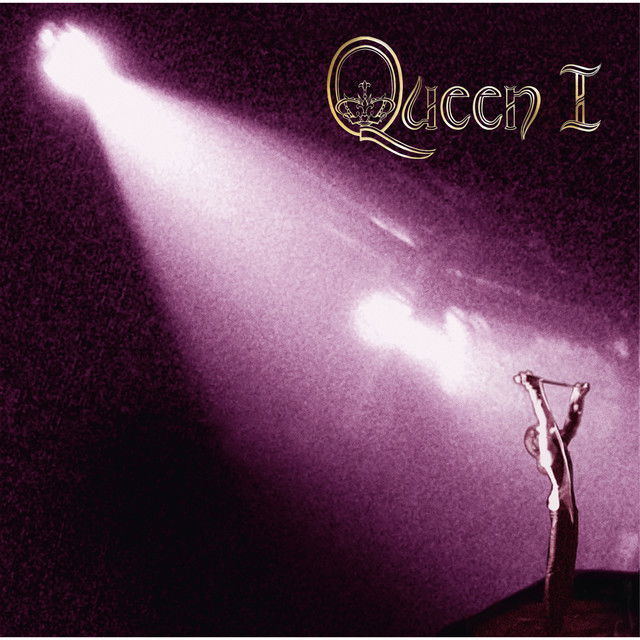
The album despite not making much of an impact on the charts and selling poorly. It showed a band who were willing to push boundaries, and were very ambitious. With intricate arrangements and Mercury's commanding vocals, this was the sound of an inexperienced but very ambitious band.
Following the release of the album Queen were offered to be the lead support on tour with Mott the Hoople but by the time this tour had started the band had already begun work on album number 2.
Seven Seas of Rhye- Queen II
In August 1973, Queen began recording their second album. Unlike their debut, they now had access to regular studio time rather than being restricted to off-peak hours. Determined to make full use of the facilities available, the band worked at Trident and Langham 1 Studios alongside co-producers Roy Thomas Baker and Robin Geoffrey Cable, with Mike Stone as the engineer. The band had hoped to bring in David Bowie as a producer, the band approached him, but he declined due to his commitments to recording 'Pin Ups' and working on 'Diamond Dogs'.
This album marked the first time fans could hear the elements that would come to define Queen’s signature sound.
The album featured multi-layered overdubs, rich vocal harmonies, and a diverse blend of musical styles. It was grandiose yet heavy, incorporating elements of art rock, progressive rock, glam rock, and even heavy metal.
Queen II is a concept album set in the same medieval faery-realm as their first album, following a royal line's magical battle against forces of darkness. The two sides of the original LP were labelled "Side White" and "Side Black" (instead of the conventional sides A and B), with corresponding photos of the band dressed in black on the front cover and white on the inner gatefold. The white side has songs with a more emotional theme and the black side is almost entirely about fantasy, with much darker songs.
Before put onto record these songs had been around for a long time. 'Father To Son', 'Ogre Battle' and 'Procession' had all been premiered as early as 1972. 'Seven Seas of Rhye' dated to Freddie Mercury's Wreckage days in 1969. "See What a Fool I've Been", the B-side to the 'Seven Seas of Rhye' single and 'White Queen (As It Began)' were left over from the Smile days.
The band had held these back on purpose, they wanted to have more experience and ultimately freedom in the studio before attempting to put these onto tape.
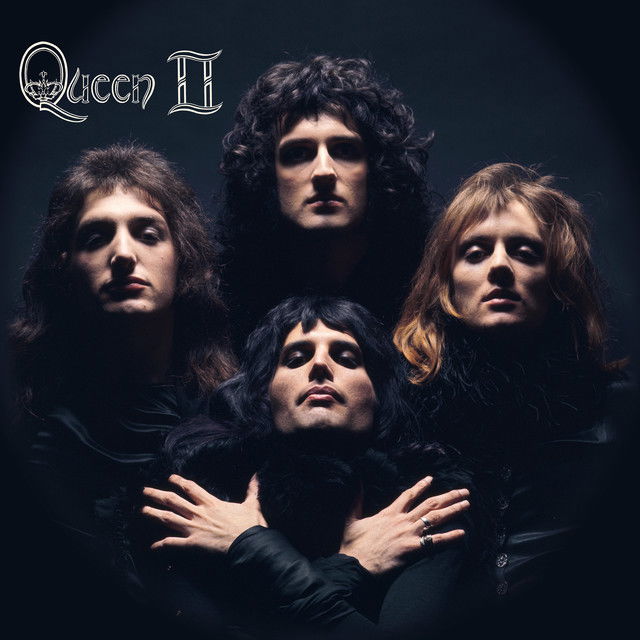
After recording the album, the band continued to tour with Mott the Hoople, ending 1973 with two shows at the Hammersmith Odeon, playing to 7,000 people.
In January 1974 the band played the Sunbury Pop Festival in Australia. They arrived late, and were jeered and taunted by the audience who expected to see home grown acts. Before leaving, Mercury announced, "when we come back to Australia, Queen will be the biggest band in the world!
The album was released in March 1974 and featured the iconic photograph of the band taken by Mick Rock. Which would later be used in the music video for arguably the bands most famous song 'Bohemian Rhapsody'.
'Queen II' charted and reached Number 5 on the British album chart. The albums lead single 'Seven Seas of Rhye' reached the Top 10 on the UK Singles Chart and gave the band their first hit. A tour was booked in early 1974 to support the album which ended at the Rainbow Theatre. This album would later be released as 'Live at the Rainbow'.
Before heading out on tour with Mott the Hoople again, this time in the US. In May 1974 during the first month of the tour May collapsed and was diagnosed with hepatitis, forcing the cancellation of their remaining dates.
Upon return to the UK, the band went back into the studio.
Now I'm Here- Sheer Heart Attack
Queen begun work on their third album initally without May who was still recovering from his hepatitis. He would return mid way through the recording process of what would become 'Sheer Heart Attack'. This album saw Queen digress from the progressive sound found on their first two albums and instead featured a more pop centric and traditional rock sound. For many fans and critics this is the first great Queen album.
The album's first single 'Killer Queen' reached number 2 on the UK Singles Chart and provided the band with their first top 20 hit in the US, peaking at number 12 on the Billboard Hot 100. The album experimented with a variety of musical genres, including British music hall, heavy metal, ballads, ragtime, and Caribbean. May's 'Now I'm Here' documented the group's curtailed American tour and proved to be another hit for the band., 'Brighton Rock' served as a vehicle for his regular on-stage solo guitar spot. Deacon wrote his first song for the group, 'Misfire', Mercury wrote the closing number, 'In the Lap of the Gods', with the intention that the audience could sing along to the chorus when played live. This was the first record by Queen to feature at least one song to be written by each member of the band, and 'Stone Cold Crazy' was the first song where all four members shared a writing credit.
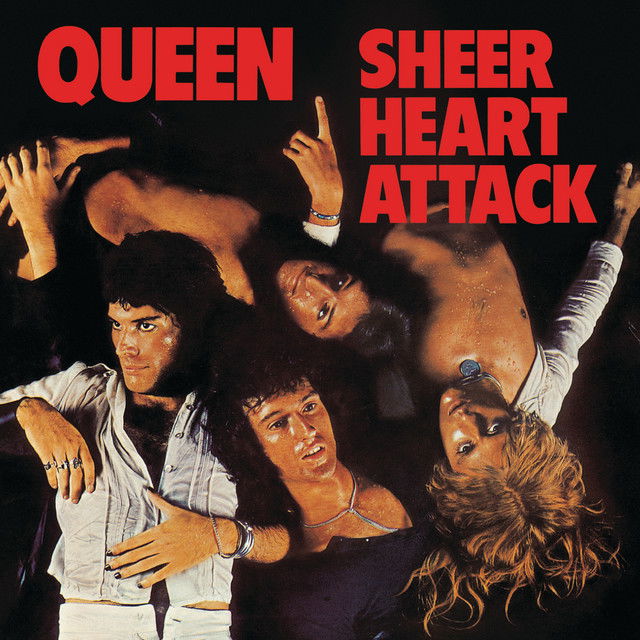
Queen had arrived, this was the album that moved Queen into being a headline band. In January 1975 the band headed back to the States, this time not as support but as headliners. Dates in the US were successful, and they played in Canada for the first time.
However, several dates of the tour were cancelled after Mercury fell ill with laryngitis. In April and May 1975 the band toured in Japan, and played eight shows in seven cities. Queen were now a huge band and had, had success across the globe. Despite this success they were still tied into the original deal with Trident. Still living in poverty in bed sits. EMI contacted lawyer Jim Beach, who tried to find a way of extracting them from their contract. Trident complained that they had invested £200,000 in Queen and wanted their money back first.
In August, after an acrimonious split with Trident, the band negotiated themselves out of their contract and searched for new management. In the end the band signed with Elton John's manager John Reid. The band were said to be impressed with his introduction, where he said "I'll take care of the business; you make the best record you can".
They didn't need to be told twice.
The Prophets Song- A Night at the Opera
Queen headed back into the studio to work on a fourth album 'A Night at the Opera'. The band had taken the message from their new manager literally and set t work on creating their magnum opus. At the time it was released this album was the most expensive album ever produced. To make this record the band used seven different studios.
Using this number of studios gave them access to equipment and instruments that they had not used before. Complex production including multi track recording was used to create the expansive sound. Queen had embraced different styles before, but on 'A Night at the Opera' they really went for it. The songs embrace should a wide range of styles including ballads, music hall, sea shanties, dixieland, hard rock and progressive rock influences.
The band wanted to make something really special with this album, and they succeeded. It became the bands first number-one album in the UK, topping the UK Albums Chart for four non-consecutive weeks. It peaked at number four on the US Billboard Top LPs & Tape chart and became the band's first platinum-certified album in the US. It also produced the band's most successful single in the UK, 'Bohemian Rhapsody', which became their first number one song in the country. Despite being twice as long as the average length of singles during the 1970s.
The album featured contributions from all four members again. Mercury wrote the opening track 'Death on Two Legs' a savage critique on Trident and the bands early managers. Not everyone was a fan. The bands label EMI were unsure and May was unsure about the lyrics. However, Mercury was adamant that it made the album. It's one of the most unique Queen songs and dare I say it has a little bit pf punk in it.
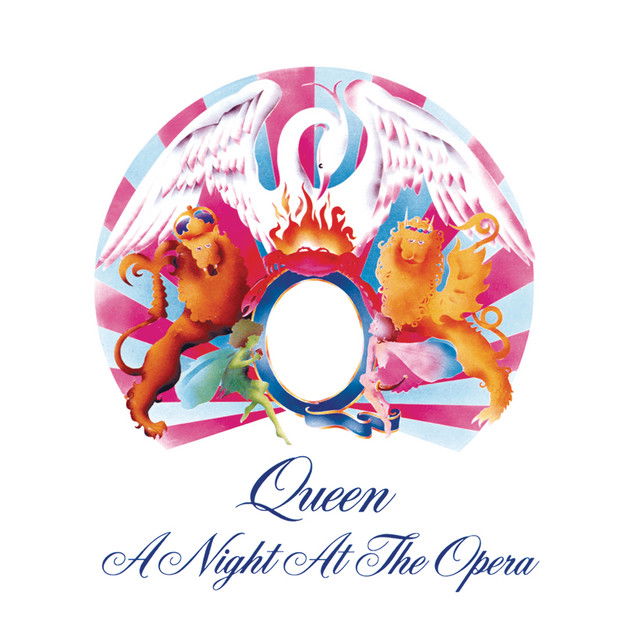
The other songs written by Mercury are nothing like 'Death on Two Legs', 'Seaside Rendezvous' and 'Lazing on a Sunday Afternoon' are much more mellow and see the band embrace traditional British music hall efforts. Mercury also wrote the bands most famous song 'Bohemian Rhapsody' which orginated from pieces of music that he had written at Ealing College. It combined three songs into one long nearly 7 minute epic. A song that starts as a somber ballad and then becomes a hard rock epic, with an operatic middle section.
At the time the bands label did not want this to be released commenting that no one would play it. Mercury insisted it would be released in full. DJ Kenny Everret played the song on the radio, despite being told not by the band. The song was played fourteen times over a single weekend. and the radio station was overwhelmed by callers. EMI were forced to release the song, a song they told the band would not suceed. It reached number one in 1975 becoming the Christmas Number One that year and remaining in the top position for nine weeks.
The band would pratically invent music videos with the video for 'Bohemian Rhapsody'. Directed by Bruce Growers, and filmed at Elstree Studios. The impact of the video cannot be understated this video was recorded seven years before the birth of MTV.
It wasn't just Mercury writing though. May wrote '39', 'Sweet Lady' and 'The Prophets Song', Taylor 'I'm in Love with My Car' and Deacon 'You're My Best Friend'.
'You're My Best Friend' was only the second song to be written by Deacon, and it became the albums second single. Reaching Number 7 in the UK. '39' was May's attempt to do a 'lover's pirate shanty.' It relates the tale of a group of space explorers who embark on what is, from their perspective, a year-long voyage. Upon their return, however, they realise that a hundred years have passed, because of the time dilation effect in Einstein's theory of relativity, and the loved ones they left behind are now all dead or aged.
For many this collection of songs is the bands best. Even today it often tops the list of Queen's best album, and is high up in lists ranking the best British albums ever. Its a collection of everything that had made Queen great in one record. It was an album that was perceived as a classic at the time and fifty years later is still considered a classic. Everything about the album is majestic from the songs to it's title and of course the iconic artwork. Which features the famous Queen logo made up the band members zodiac signs. Two lions for Leo (John Deacon and Roger Taylor), a crab for Cancer (Brian May), and two fairies for Virgo (Freddie Mercury). 'A Night at the Opera' turned Queen into superstars. It catapulted Queen from British hit makers to global rock stars, and would begin their legacy as one of the most important bands of the 1970s.
The band's A Night at the Opera Tour began in November 1975, and covered Europe, the US, Japan, and Australia. On 24 December, Queen played a special concert at the Hammersmith Odeon which was broadcast live on the BBC show The Old Grey Whistle Test, with the audio being later broadcast on BBC Radio 1.
Queen would play some huge gigs in 1976 to support this record including, a huge free concert in London's Hyde Park. Which drew in a large crowd, some speculate that 180,000 people attended the concert. The band intended to perform their usual encores of Now I'm Here, Big Spender and Jailhouse Rock, but the show had run a half hour past its scheduled ending time (a curfew strictly enforced by the authorities). The police threatened to arrest the band if they tried to go back on stage to play the encores, and Freddie was later quoted saying how he would prefer not to be stuck in a jail cell in his leotard, so the show was over after in the Lap of the Gods... Revisited.
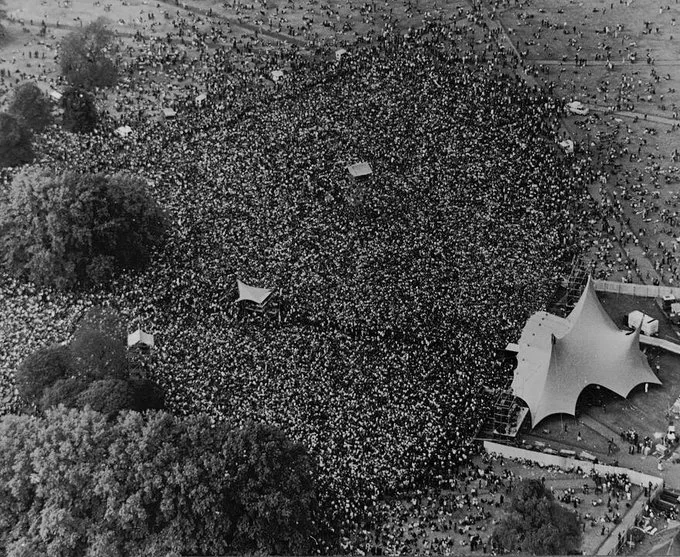
Good Old Fashioned Lover Boy- A Day at the Races
After the success of 'A Night at the Opera' it did not take long for Queen to head back into the studio. By the time of the Hyde Park concert in 1976, Queen had already begun work on 'A Day at the Races'. Just as they had done on 'A Night at the Opera' the band borrowed the name from a Marx Brothers film, and opted for a similar cover.
This album marked a change in the producers chair though. Roy Thomas Baker did not return, the band instead self produced the album with some assistance from Mike Stone. Who also helped the band with backing vocals.
Queen picked up where they had left of though, a distinct sound had been formed on 'A Night at the Opera' and the band were now well versed in how to record an album. Similarly to The Beatles in the 1960s Queen understood that the studio could be used as an instrument.
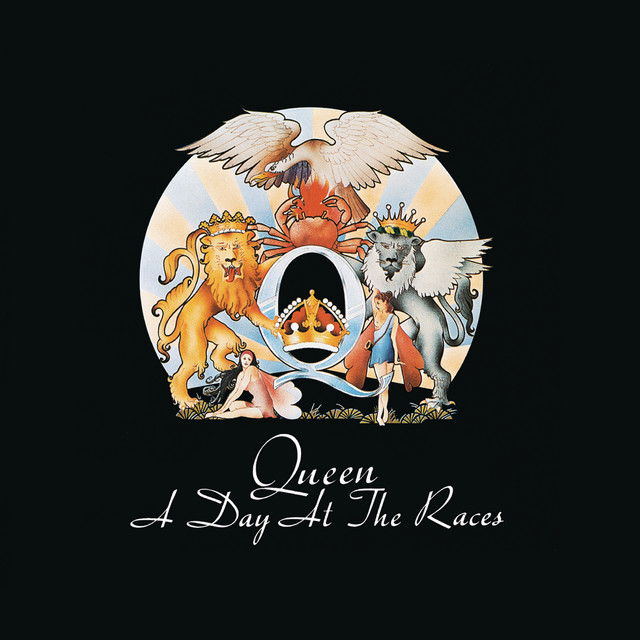
All four members contributed songs to the record with varying degrees of success. Deacon wrote 'You and I' which became a b-side and was never played live. Taylor wrote 'Drowse' which was also never played live. May contributed 'Tie Your Mother Down'which he had written two years before the formation of Queen, which became the albums second single and remained a main stay in Queen shows from there on in. Originally written on a Spanish Guitar, May planned on changing the songs style and some lyrics. However, after persuasion from Mercury the song remained the same.
Mercury wrote two of the most famous songs from this album. Lead single 'Somebody to Love' which was the bands tribute to gospel and in particular Aretha Franklin. The song was the albums biggest hit and went to Number Two on the UK Single Charts and to Number Thirteen on the US Singles Chart.
When recording 'Somebody to Love' the band multi tracked their voices in order to generate the impression of a gospel choir. Taylor, Mercury and May all provided vocal harmonies on this track. Despite being a tribute to Gospel, this is still firmly a Queen song with a guitar driven feel complete a solo by May.
'Good Old Fashioned Lover Boy' was also written by Mercury and features Mike Stone singing backing vocals. The song featured as a single, and reached Number Seventeen on the UK Singles Chart.
The album again reached Number One in the UK Album Charts and made the Top Five in the States.
On 1 December 1976, Queen were the intended guests on London's early evening Today programme, but they pulled out at the last-minute, which saw their late replacement on the show, EMI labelmate the Sex Pistols, give their infamous expletive-strewn interview with Bill Grundy.
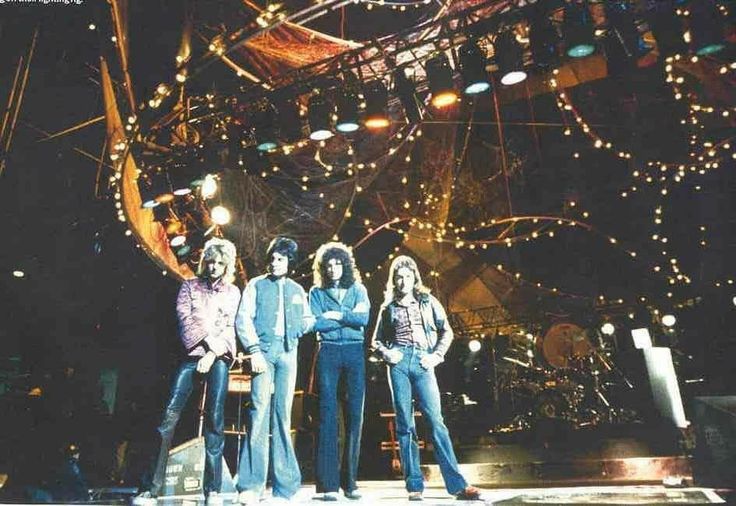
The band headed on tour to support the album in 1977. Playing a total of 59 shows. For most of the North American shows Thin Lizzy supported the band. Included in this American leg of the tour was a huge show at Madison Square Garden. The show sold out within minutes, Queen were one of the most in demand bands in the world at that time.
At the UK shows in particular a show at Stafford's Bingley Hall, the band noticed that the audiences were singing along to every song. Before this moment the band were annoyed with singing along. Brian May has famously stated "When people started singing along, we found it kind of annoying… Then there was an enormous realisation, at Bingley Hall in the Midlands. They sang every note of every song. Freddie and I looked at each other and went, 'Something's happening here. We've been fighting it, and we should be embracing it.'"
These moments would lead to the band changing songwriting approach and arguably lead to the two most important songs of their career.
They ended the tour with two concerts at Earls Court, London, in June, which commemorated the Silver Jubilee of Queen Elizabeth II, and at the cost of £50,000 the band used a lighting rig in the shape of a crown for the first time.
It's Late- News of the World.
As mentioned previously Queen had a musical revelation when touring 'A Day at the Races' but the public has also had one to. By 1977 punk rock ruled the roost, with bands like The Clash and Sex Pistols being the two most important groups in Britain. This new style and new bands sparked a huge backlash to progressive rock acts like Queen.
Queen were not affraid to change though, they moved towards a much simpler spontaneous hard rock sound. It worked.
The album reached Number Four on the UK Albums Chart and Number Three on the US Top Albums Chart.
Following on from the Bingley Hall shows, Queen were inspired to write an anthem. Something that was communal, where a crowd could join that came in the form of Brian May's 'We Will Rock You' and 'We Are the Champions' which together became a double A Side, and the lead single from 'News of the World.
'We Will Rock You' was a very simple song, and was written to be carried by a crowd. Other than the last 30 seconds, which contains a guitar solo by May, the song is generally set in acappella form, using only stomping and clapping as a rhythmic body percussion beat.
The stomps were recorded by the band themselves stomping on a drum riser and then overdubbed in the studio. As they did this the band clapped, in the studio delays were added to the claps. In order to make it sound as if many people were participating. When reality it was just the band.
The song became a main stay in the bands set, and was played alongside 'We Are the Champions'. The later was written by Mercury, also in response to the Bingley Hall concert, at the end of the show the crowd has sung 'You'll Never Walk Alone' to the band, Mercury was inspired and wanted to get crowds all waving and singing in a moment of communal unity.
Where as 'We Will Rock You' is a rock stomper, 'We Are the Champions is a more mellow affair. Mercury uses Jazz chords on the piano for the most part and sings in a falsetto vocal. The song never reached Number One in the UK. It peaked at Number Two. Yet it's impact is still felt today, it is played at nearly every sporting event across the planet.
These two songs marked a new chapter for the band.
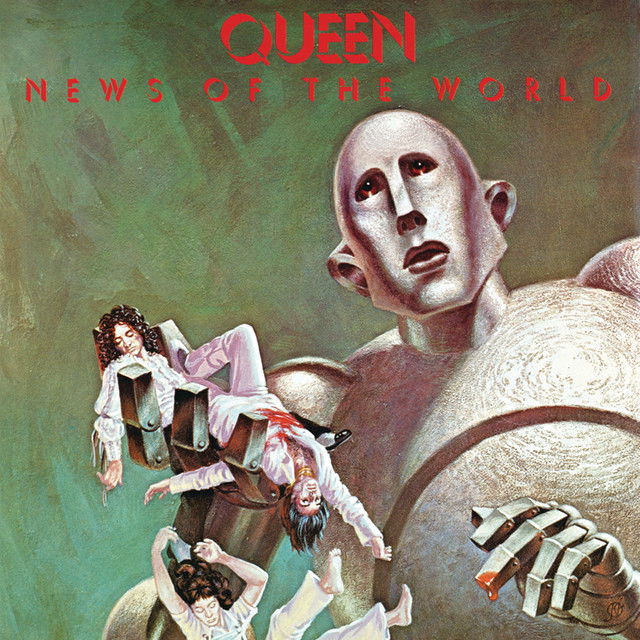
'News of the World' featured more of Taylor and Deacon's songs. Both composing two songs for the album. Taylor with 'Fight from the Inside' and 'Sheer Heart Attack' written with Mercury. Deacon meanwhile wrote 'Who Needs You' and the brilliant 'Spread Your Wings'.
'Spread Your Wings' would become the albums second single. It has been said the band chose to release 'Spread Your Wings' as they regretted releasing 'Tie Your Mother Down' as the second single from 'A Day at the Races' instead of 'You & I' which had also been written by Deacon.
The song is a beautiful narrative talking about a fictional character called Sammy who believes he can make something of himself. It's one of my favourite Queen songs, and is very unique in their discography as not only does it use a third person narrative. It's also the only Queen single that features no backing vocals from the rest of the group. All vocals are sung by Mercury.
'It's Late' is the final single from 'News of the World' written by May. A song that May has described as a three act theatrical play, a six minute epic that talks about a relationship and it's trials and tribulations. The album version is definitely the superior version, with the single version being edited down to just under four minutes. The band perfectly compliment each other, and the song perfectly encapsulates the sound of 70s Queen with thundering roars, intricate guitars, pulsating drums and more mellow moments littered throughout.
'Sheer Heart Attack' was only half finished when the band were recording the album of the same name in 1974, they brought it back for 'News of the World' and it's the bands attempt at more punk rock sound. Taylor and Mercury take vocal duties. Mercury sings the verses, and Taylor hits the high notes in the choruses. This song became the b-side for Deacon's song 'Spread Your Wings'. Deacon is the only member of the band not to feature on 'Sheer Heart Attack' with the bass parts being instead played by Taylor.
The album's cover was a painting by American sci-fi artist Frank Kelly Freas. Taylor had an issue of Astounding Science Fiction (October 1953) whose cover art depicted a giant intelligent robot holding the dead body of a man. The painting inspired the band to contact Freas, who agreed to alter the painting for their album cover, by replacing the single dead man with the four "dead" band members (with Mercury and May dead in the robot's hand—Mercury bleeding from his chest and blood on the robot's middle finger of its opposite hand and with Taylor and Deacon falling to the ground, Taylor only visible on the back cover).
Following the release of the album, the band headed out on tour. Playing 46 shows across North America and Europe. Including two nights at Madison Square Garden. Which saw the band reiceve Madison Square Garden Gold Ticket Award for passing more than 100,000 unit ticket sales at the venue.
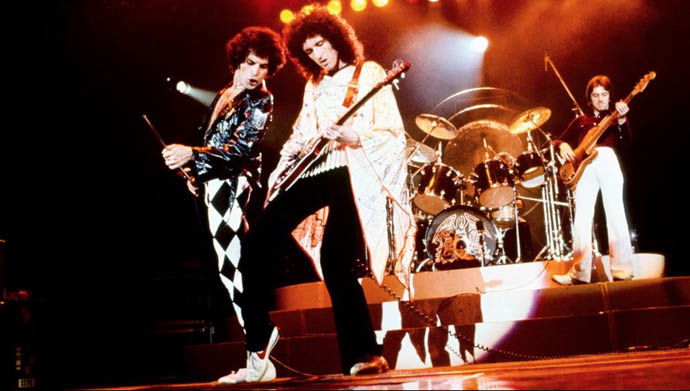
Back in the UK, the band would play three nights at London's Wembley Arena and return to Bingley Hall this time armed with 'We Will Rock You' and 'We Are the Champions.'
Queen often did not have an opening act for the vast majority of the shows on this tour. Now with five albums worth of material, the band felt as if they had more than enough songs to put on a show. The length of the concerts broke the 2 hour mark on this tour. With the band sometimes playing over 25 songs a night.
The tour ended in May 1978, Queen then headed back into the studio.
Don't Stop Me Now- Jazz
Sessions for 'Jazz' began in July 1978. In June 1978 Queen had been hit with a huge tax bill and therefore subsequently Queen decided to record the album outside of the UK. Rehearsals began in Nice, first without May who had relocated to Canada to deal with some personal issues. May then joined the band in France.
During this rehearsal period, Queen attended the Montreux Jazz Festival, which likely inspired the title of the album. There, they ran into David Bowie, who was working on his 1979 album Lodger between tour dates. Bowie convinced them to record at Mountain Studios in Montreux. A studio that the band would continue to use for the rest of their career.
Before this move to Montreux the band had already got some prelimary recordings of 'Don't Stop Me Now', 'Fat Bottomed Girls', 'In Only Seven Days' and 'More of That Jazz'. After the move to Montreux the band attended a stage of the Tour de France. This inspired Mercury to write the albums lead single 'Bicycle Race'.
It wasn't all work and no play in Switzerleand though, whilst in Montreux they celebrated Taylor's 29th birthday. Where it has been said Mercury was seen swinging on the hotels chandelier during the event.
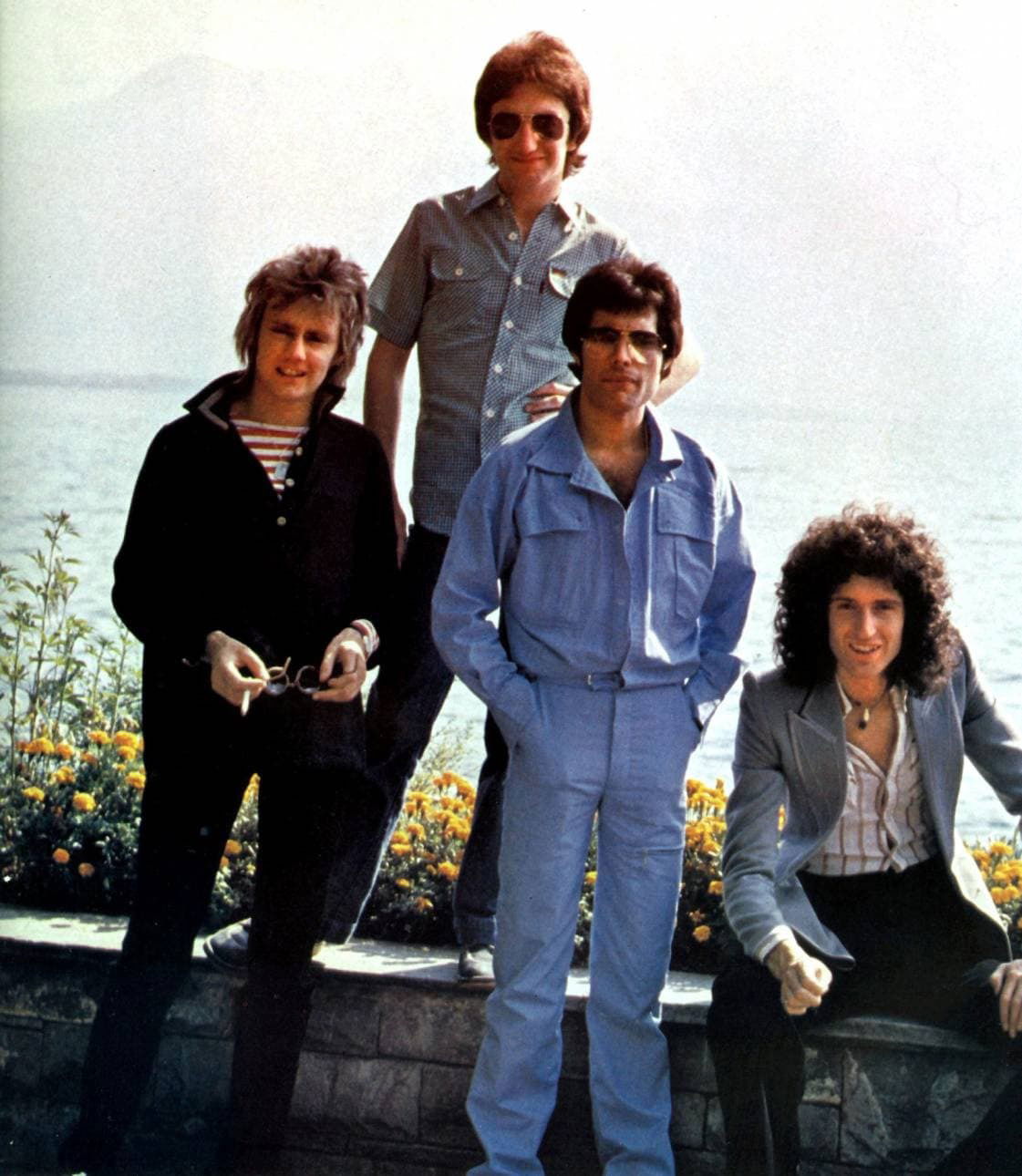
After a brief holiday in the middle of August, the band moved production back to France, where they worked at Super Bear Studios. Where the band would finish the record.
The albums lead single followed the same trend as 'News of the World' it was a Double A-Side. 'Bicycle Race' and 'Fat Bottomed Girls' were the songs.
'Bicycle Race' was written by Mercury and although makes reference to cycling it is much more than that. Lyrically the song is full of political, social and pop culture references. From religion, the Vietnam War, cocaine to fictional characters like Peter Pan, and Superman. Mercury also comments on the two biggest films of the era Jaws and Star Wars, stating he's not a fan of either of them.
Musically the song is very different in structure to the Queen of old. The song starts with a chorus with no instrumental acommpiment, and in the middle the solo is not played by a guitar instead played by bicycle bells. The song also makes reference to 'Fat Bottomed Girls' with the "fat bottomed girls, they'll be riding today". 'Fat Bottomed Girls' reciprocates with "Get on your bikes and ride!"
The songs music video caused some controversy, it was filmed at Wimbledon Greyhound Stadium and featured 65 nude women on bicycles racing. The group rented the stadium and several dozen bicycles for one day for filming the scene; however, when the renting company became aware of the way their bikes were used, they requested that the group purchase all the bicycle seats.
'Fat Bottomed Girls' was written by Brian May and celebrates curvier women. May and Mercury share lead vocals with Taylor doing harmonies. The song alongside 'Bicycle Race' reached Number Eleven in the UK Singles Chart and Number Twenty Four on the Billboard Hot 100 in the US.
The albums second single was penned by Mercury and perfectly portrays how the band were feeling at the time. Mercury has stated that "The band felt they were "getting better at having a good time" and the lyrics reflect this." Built around a Mercury paino part. Deacon and Taylor provide a bass and drum backing track. May's only input on this track is a rather short but brilliant solo.
The single reached Number Nine in the UK charts but only Number Eighty Six in the US; as the album was a top-10 hit, the song got some airplay on U.S. album-oriented rock stations despite its low chart ranking as a single. Despite this, the song has grown in stature with time and has been popularised not only by consistent airplay, but by its use in advertisements, television programmes and films.
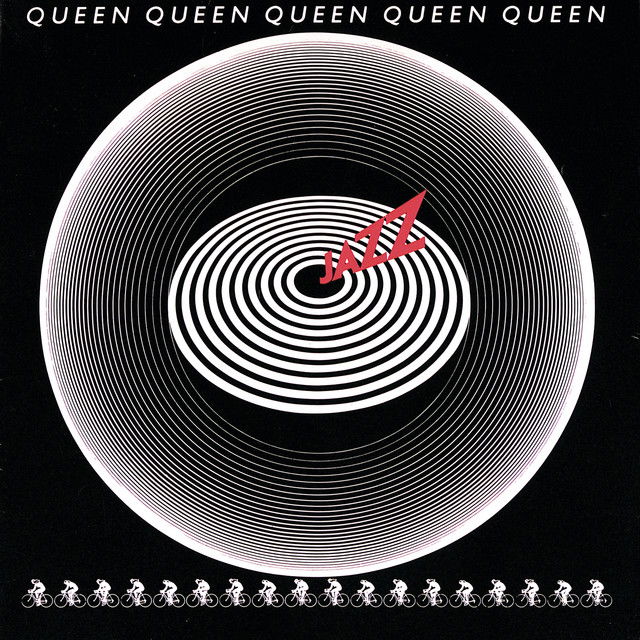
The song was voted as the third-best Queen song by readers of Rolling Stone, who noted that "time has also been very kind to it and it's widely seen now as one of the group's best works. Not everyone was as kind to the song though. At the time of it's release May thought it was celebrating the hedonistic and risky lifestyle of Mercury. However, as time as passed and after hearing the song being played in numerous different circumstances weddings, parties and funerals, he has come to appreciate it as representing "great joy"
As with the previous records all four members contributed songs to Jazz. However, all of the singles were written by Mercury and May. 'Mustapha' written by Mercury consists of a whole host of lyrics in a variety of languages some English, Arabic, Persian and possibly a number of invented words. Some understandable words are "Mustapha", "Ibrahim" and the phrases "Allah, Allah, Allah we'll pray for you", "salaam alaykum" and "alaykum salaam".
This song was sung on the 'Jazz' tour and sometimes the introduction of this song was used to instead of the complex introduction to the 1975 hit 'Bohemian Rhapsody.'
'Jealousy' was penned by Mercury and features May playing his Hallfredh acoustic guitar. The guitar had been given a replacement hardwood bridge, chiselled flat, with a small piece of fret wire placed between it and the strings, which lay gently above. The strings produce the "buzzing" effect of a sitar. 'Dreamer's Ball' is Brian May's tribute to Elvis Presley, who died one year before the album was released. The arrangement for the concert version was completely different, with May and Taylor doing vocal brasses.
'Fun It' is a funk track with a disco vibe by Taylor, where both he and Mercury shared the vocals. Taylor did the lead vocals, while Mercury was backup. Taylor used Syndrum pads and played most of the instruments. It can be seen as a precursor to where Queen were heading in the next decade.
It's an album that features a real mix of songs, at the time it got mixed reviews. In more recent times people are a lot more appreciative of the record, and admired Queen for embracing new styles.
The tour for 'Jazz' was the bands biggest to date a total of 78 shoes across North America, Europe and Japan. The band played a rather famous Halloween show in New Oreleans right at the start of the tour, which led to a rather large eccentric party that featured snake charmers, strippers, crossdressers and a naked fat lady who smoked cigarettes in her crotch.
When the band headed into Europe they decided to record some of the shows for a live album, 'Live Killers' which would be released in June 1979.
The album reached number 3 on the UK Albums Chart and number 16 on the Billboard 200 in the United States, and is certified double platinum in the US
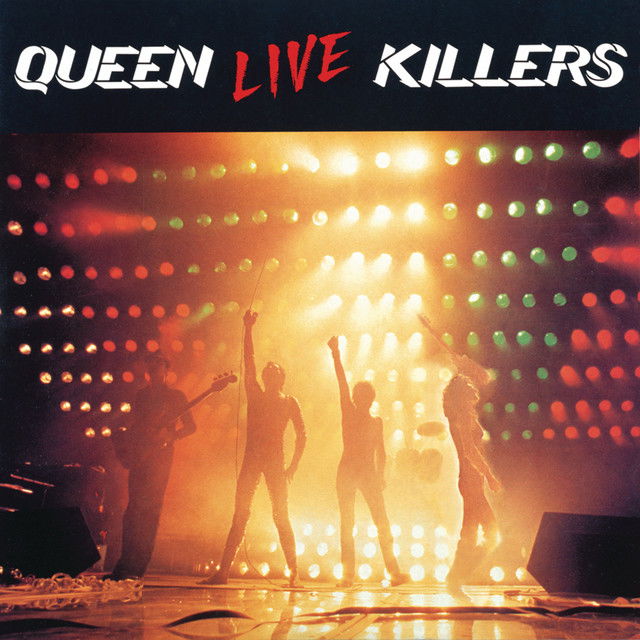
'Live Killers' featured recordings from across the European tour, for the most part. However, not all of the songs played on this tour were recorded. 'It's Late', 'Somebody to Love' and 'Fat Bottomed Girls are all missing.
It was produced by the band themselves and was mixed in Mountain Studios in Montreux. Despite lacking the gloss of the studio albums and being unable to provide the visuals of a Queen show. 'Live Killers' reinforces Queen as the best band live band of the era. The crowd is mixed perfectly not to overshadow the songs but to remind the listener that these songs are being performed live.
I think it's brilliant but when researching this post. I think I am in the minority.
Play the Game- The Game
Later in 1979 Queen released the very successful single 'Crazy Little Thing Called Love' the lead track from their upcoming album 'The Game.' A rockabilly song that was said to be written and recorded in the style of Elvis Presley. It made the the Top Ten in Numerous countries hitting Number Two on the UK's Single Chart in 1979 and became the bands first Number One single in America in 1980. Remaining on top of the charts for four consecutive weeks.
Mercury claimed that he wrote the song really quickly. Crazy Little Thing Called Love' took me five or ten minutes. I did that on the guitar, which I can't play for nuts, and in one way it was quite a good thing because I was restricted, knowing only a few chords. It's a good discipline because I simply had to write within a small framework. I couldn't work through too many chords and because of that restriction I wrote a good song, I think.' Mercury played the guitar on the record, and would subsequently play rhythm guitar live.
After the release of the song the band would play a small tour, revisiting some smaller venues around the UK. Initially scheduled to end on 22 December after the concert at the Alexandra Palace, the last concert of this tour at the Hammersmith Odeon, was also the first concert of the Concerts for the People of Kampuchea, hosted by Paul McCartney.
Queen would begin the 1980s with the release of their most commercially successful album to date. 'The Game' would be the only Queen album to reach Number One in the US and would also give the band two Number One Singles in America, the aforementioned 'Crazy Little Thing Called Love' and 'Another One Bites the Dust.'
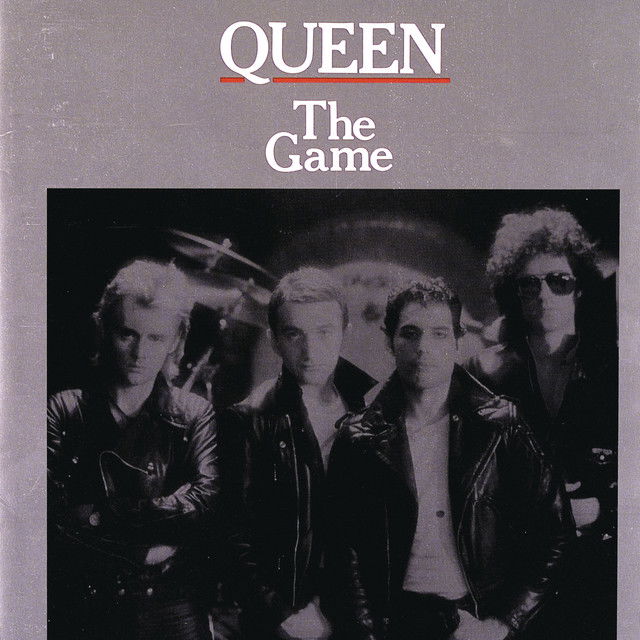
'Another One Bites the Dust' written by John Deacon saw the band embrace funk, and was released by the band at the suggestion of Michael Jackson. Who was a huge fan of the band and would regularly see them when they toured in the states. This song was a worldwide hit, and is credited on being Queen's best selling single, selling over seven million copies worldwide. 'Another One Bites the Dust' would remain in the bands setlist from here on in.
This album has some of the best songs Queen ever wrote and recorded. I don't believe there is a weak track on the album. From the opening track 'Play the Game' written by Mercury which saw the band embrace electronic synthesizers for the first tim. All the way through to the ballad 'Save Me' written by May as a tribute to his friend. It's the bands best collection of songs, this record doesn't particularly have the anthem of previous albums, but it saw Queen usher in a new decade and embrace new ideas including funk and disco.
A theme they would again explore two years later.
The band would play 80 shows to tour 'The Game' across North America, Europe, Asia and for the first time ever South America. Queen again played Madison Square Garden on this tour, selling out the famous New York arena three times.
It was in South America where Queen really played some of their best shows though. They had made the jump into stadiums becoming the first band to do this. It had a similar feeling to in the 1960s where The Beatles became the first band to play in stadiums in North America.
The tour included five shows in Argentina, one of which drew the largest single concert crowd in Argentine history with an audience of 300,000 in Buenos Aires and two concerts at the Morumbi Stadium in São Paulo, Brazil, where they played to more than 131,000 people in the first night (then the largest paying audience for a single band anywhere in the world) and more than 120,000 people the following night. A region then largely ruled by military dictatorships, the band were greeted with scenes of fan-fever.
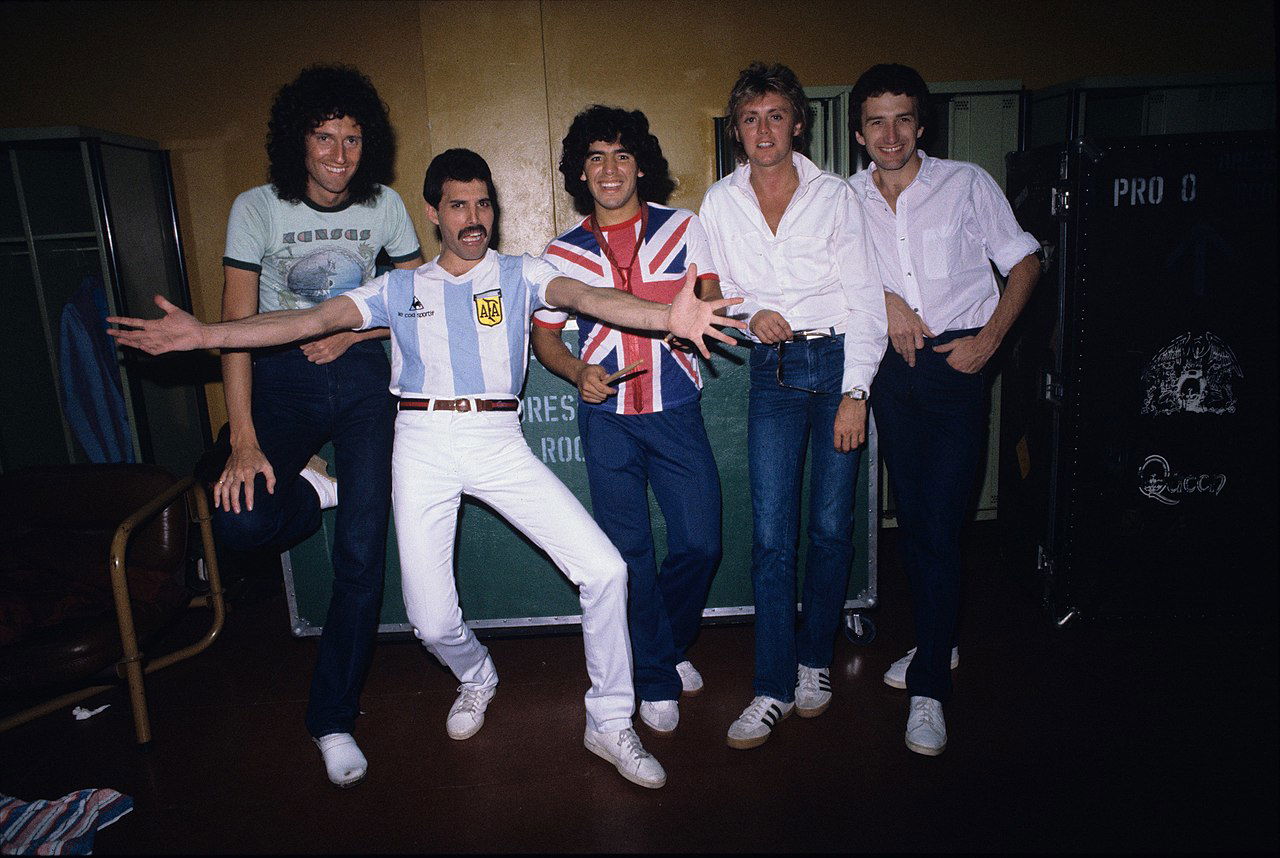
Following these succesful dates in South America, Queen headed back to North America. On 24 and 25 November 1981, Queen played two nights at the Montreal Forum, Quebec, Canada. The concert was recorded and became the live album 'Queen Rock Montreal'
Alongside recording 'The Game', Queen recorded a soundtrack album in 1980 for the film 'Flash Gordon', the album of the same name features a number of instrumental tracks. Only two songs on the album feature lyrics. 'Flash's Theme' released under the title 'Flash' was the only single to be released from the album, the song charted well hitting the Top Ten in the UK and would feature on the bands 'Greatest Hits' album released in 1981.
Under Pressure- Hot Space
In 1981 Queen headed back into the studio to work on the follow up to 'The Game' what they came up with was a stark departure from the Queen sound of old. 'Hot Space' is a mixture of rhythm and blues, funk, dance and disco, while the rock songs continued in a pop rock direction.
Taylor and Deacon wanted to explore the disco sound and R&B elements after the success of 'Another One Bites the Dust' the band were up for taking it further,however in retrospect they have since admitted that it went to far.
A further influence was in the studio during the making of this album, particularly in the recording sessions in Munich. Peter Prenter. Prenter was Mercury's personal manager and had been since 1977. He had been with Freddie and the band now for four of five years, and therefore his influence began to seep in. Taylor has since commented on this stating that "[Prenter] wanted our music to sound like you'd just walked in a gay club...and I didn't".
May also noted that the making of the album in Munich took much longer than usual and that all of the band got into "deep emotional trouble" in the city, blaming a mixture of drink, drugs and partying as the reason for the relatively lengthy recording sessions.
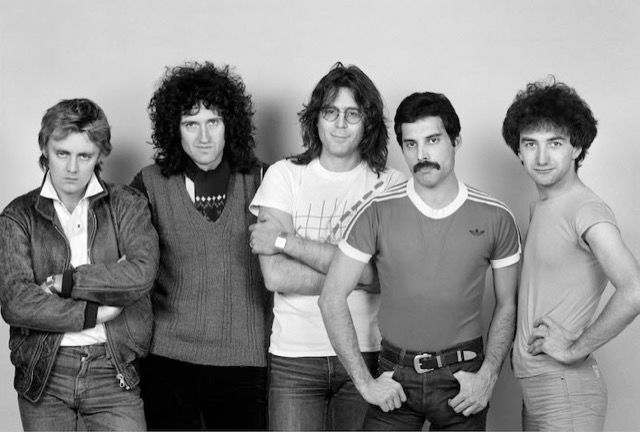
According to Mack, Queen's producer, Prenter loathed rock music and was in Mercury’s ear throughout the Hot Space sessions.
Away from the 'Hot Space' sessions Queen did write, record and release some brilliant stuff. Not all of the work for'Hot Space' was completed in Munich, the band completed some work in Montreux. Queen were working on a song called 'Feel Like'. David Bowie was also in Montreux working on recording vocals for 'Cat People (Putting Out Fire)'.
Queen had asked Bowie if he would be up for providing backing vocals on 'Cool Cat' which were later removed from the final version as Bowie was not happy with the result. The five of them continued to work together, and wrote 'Under Pressure' the song is being credited as being written by all five musicians.
The lyric writing was shared by Bowie and Mercury, Deacon came up with the bass riff, and the chord progression is taken from 'Feel Like'.
Upon it's release the song topped the UK Singles Charts and reached Number Twenty Nine in the US Billboard Top One Hundred. It was Queen's second Number One single in the UK.
In October 1981 Queen released their first compilation album, titled 'Greatest Hits', which showcased the group's highlights from 1974 to 1981. The best-selling album in UK chart history, it is the only album to sell over seven million copies in the UK. As of July 2022, it has spent over 1000 weeks in the UK Album Chart. According to The Telegraph, approximately one in three families in the UK own a copy.
'Hot Space' was released in 1982 and due to the departure in sound many were disappointed fans and critics a like. It did not sound like a Queen album and had stripped back all of the elements that had made the band great. Brian May's guitar is hidden within the mix. Instead being masked by keyboards and drum machines. This sound did not suit Queen at all.
The album did feature 'Under Pressure' one of the bands best and most well loved songs. However, the rest of the album is some of the bands worst work. In the 2011 documentary Queen: Days of our Lives, Queen's former manager Jim Beach described Hot Space as "a disaster really it didn't appeal to the hardcore Queen fans who would turn up to concerts with 'Disco Sucks' banners." After the conclusion of the Hot Space tour in late 1982, the band would rarely include songs from the album in their later live set-lists with only 'Under Pressure' remaining as a staple.
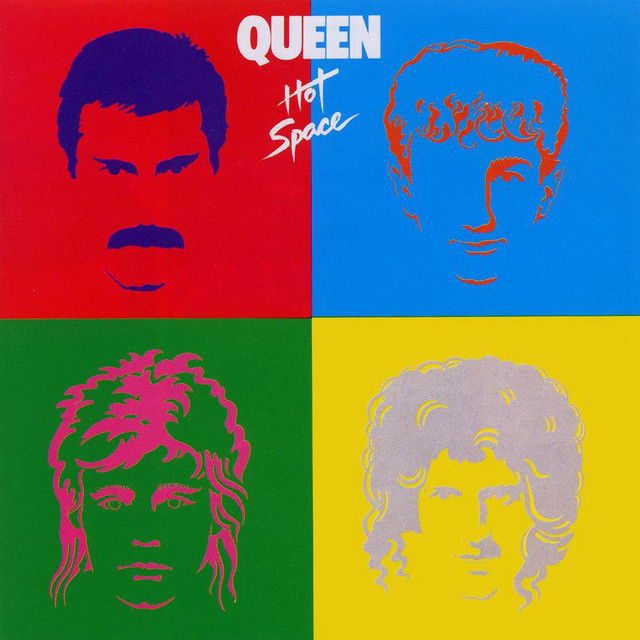
The band went on tour in April 1982 to support 'Hot Space' playing 69 shows across Europe, North America, and Asia.
Queen recruited a keyboard player for this tour, Morgan Fisher formerly of Mott the Hoople, who Queen had supported in the 1970s. It took the band a while to get an established setlist for this tour. On previous tours Queen had usually figured this out few nights in. However, on the 'Hot Space' tour every show from the first month had a different setlist. An optimal setlist was eventually decided but it was not free from changes.
Most songs from the 'Hot Space' album would be played on this tour, with 'Action This Day' and 'Under Pressure' being performed at every single show.
This tour also saw several alterations made to the schedule. The first being the cancellation of a planned concert at the Royal Albert Hall in London, due to the venue not being able to cope with the weight of the band's light rig. The second were two rescheduled concerts in England. The concert in Leeds was originally scheduled to take place at Old Trafford in Manchester and the Milton Keynes concert was supposed to take place at Arsenal Stadium in London.
A DVD documenting the band's 5 June 1982 concert at the National Bowl in Milton Keynes was released in 2004 as 'Queen on Fire Live at the Bowl'.
The 'Hot Space' tour was the last tour that Queen would perform with Freddie Mercury, and John Deacon in North America. Subsequent tours featuring these two would not go back to North America. After this tour, Queen would take a nearly two-year long break from touring.
During this downtime, Brian May worked on the "Star Fleet Project" with various other artists, Roger Taylor worked on his solo album "Strange Frontier", and Freddie Mercury would work on his debut solo album "Mr. Bad Guy", which would feature the touring keyboardist Fred Mandel.
Hammer to Fall- The Works
By August 1983, Queen had reconvened in Los Angeles at Record Plant Studios. This was the only time Queen would record in the States. Work for the album also took the band back to Munich where they had worked on 'Hot Space',
Queen had been offered another soundtrack gig during the time of recording what would become 'The Works'. Their manager Jim Beach, had given them the opportunity to compose the soundtrack for the The Hotel New Hampshire. The band agreed, but soon discovered much of their time was being spent on the soundtrack instead of the upcoming album, and the soundtrack project fell through.
One song from these sessions 'Keep Passing the Open Windows' would make it onto 'The Works'.
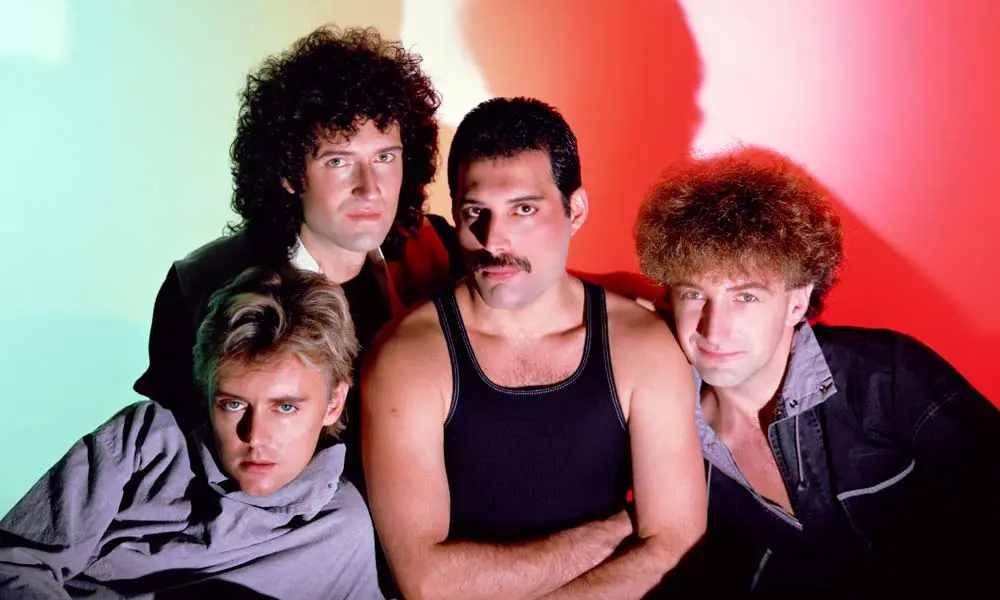
After what had happened on 'Hot Space' both the bad reception from critics and fans losing interest in the songs when played live. 'The Works' saw Queen hark back to a more rock sound, with May and Taylor coming back to the fore front. However, electronic elements and New York funk can still be heard ensuring that Mercury and Deacon were stimulated.
This led to some of the best songs that the band had ever recorded but also the band losing credibility in America due to the release of 'I Want to Break Free'.
The album opens with a Taylor composed effort 'Radio Ga Ga'. Taylor wrote this song on keyboards after hearing his son say the words 'radio ca ca'. Written in Los Angeles on keyboards and a drum machine, Deacon then came up with bass line before Mercury re-arranged the song a little. It would become the albums lead single. The song reached Number One in nineteen countries, Number Two in the UK and Number Sixteen in the US. The songs iconic music video became a main stay on MTV and won the 1984 MTV Video Music Award.
'Tear it Up' was was written by Brian May as an attempt to revive Queen's old sound, notably featuring riffs from the intro to the song 'Liar'.
't's a Hard Life' was written by Mercury. May and Taylor have stated it as one of their favourite songs of Mercury's. The song reached Number Six in the UK Singles Chart and became the bands third consecutive Top Ten single from the album.
'I Want to Break Free' written by John Deacon, is best known because of its video, featuring all four Queen members crossdressed as women, in a parody of the British soap opera Coronation Street. The idea for the clip was Taylor's. Mercury commented that 'Everybody ran into their frocks'. Deacon, the song's author, insisted he didn't want a guitar solo on the track so a synth solo was played by Mandel – live, however, May played the solo on guitar.
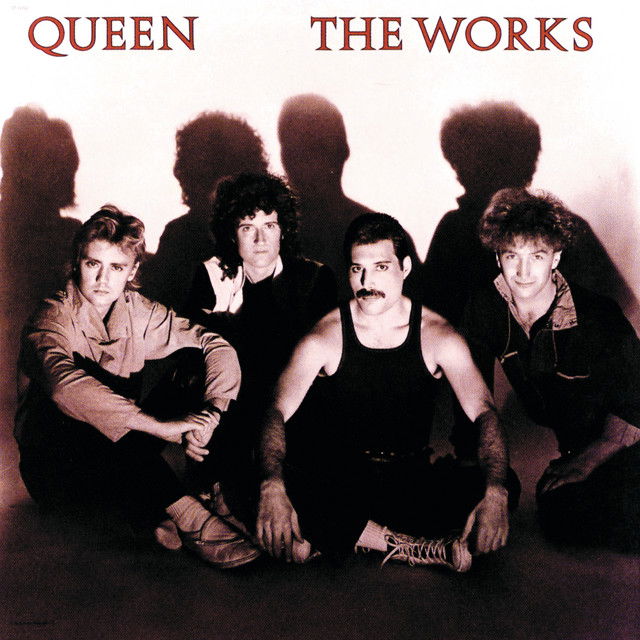
'Hammer to Fall' written by May with some lyrics about the Cold War backed up by traditional Queen riff, and some massive drum sounds. May has commented stating that the song "is really about life and death, and being aware of death as being part of life", and that "the Hammer coming down is only a symbol of the Grim Reaper doing his job!"
However, it is easy to see where the Cold War lyrics are in the song. In particular. "For we who grew up tall and proud/In the shadow of the mushroom cloud."
The album concludes with 'Is This the World We Created...?', which was written by Mercury and May in Munich after the two saw a news broadcast about poverty in Africa. This song really juxtaposes 'Hammer to Fall' with a much more intimate sound, just May and Mercury with an acoustic guitar. This song would become a main stay within the Queen set lists until 1986.
The album was a real return to form for the band. Fans in the UK, Europe and South America were huge fans of the album. However in America, fans had started to dislike Queen, after the 'Hot Space' tour and due to Mercury's sexuality.
'I Want to Break Free' and the video were the straw that broke the camels back. The American audience had failed to see the soap opera connection, and instead saw the famous video as an open declaration of transvestism and Mercury's bisexuality.
According to Taylor, MTV "was a very narrow-minded station then. It just seemed to be all fucking Whitesnake". "It was a measure of the...thinking, MTV, that they...thought it was disgraceful, and didn't show it, and banned it"
Queen headed out on there biggest tour to support 'The Works' playing in Europe, South Africa, South America, Oceania and Asia. North America was left out of this tour and subsequent Queen tours.
On this tour Queen played there biggest gig to date. The Rock in Rio festival in Brazil. Where it is believed that the band played in front more than 600,000 people across two nights. In January 1985. The edited broadcast of the shows, on Brazil's national TV Channel O Globo were broadcast across South America to an estimated 200 million people.
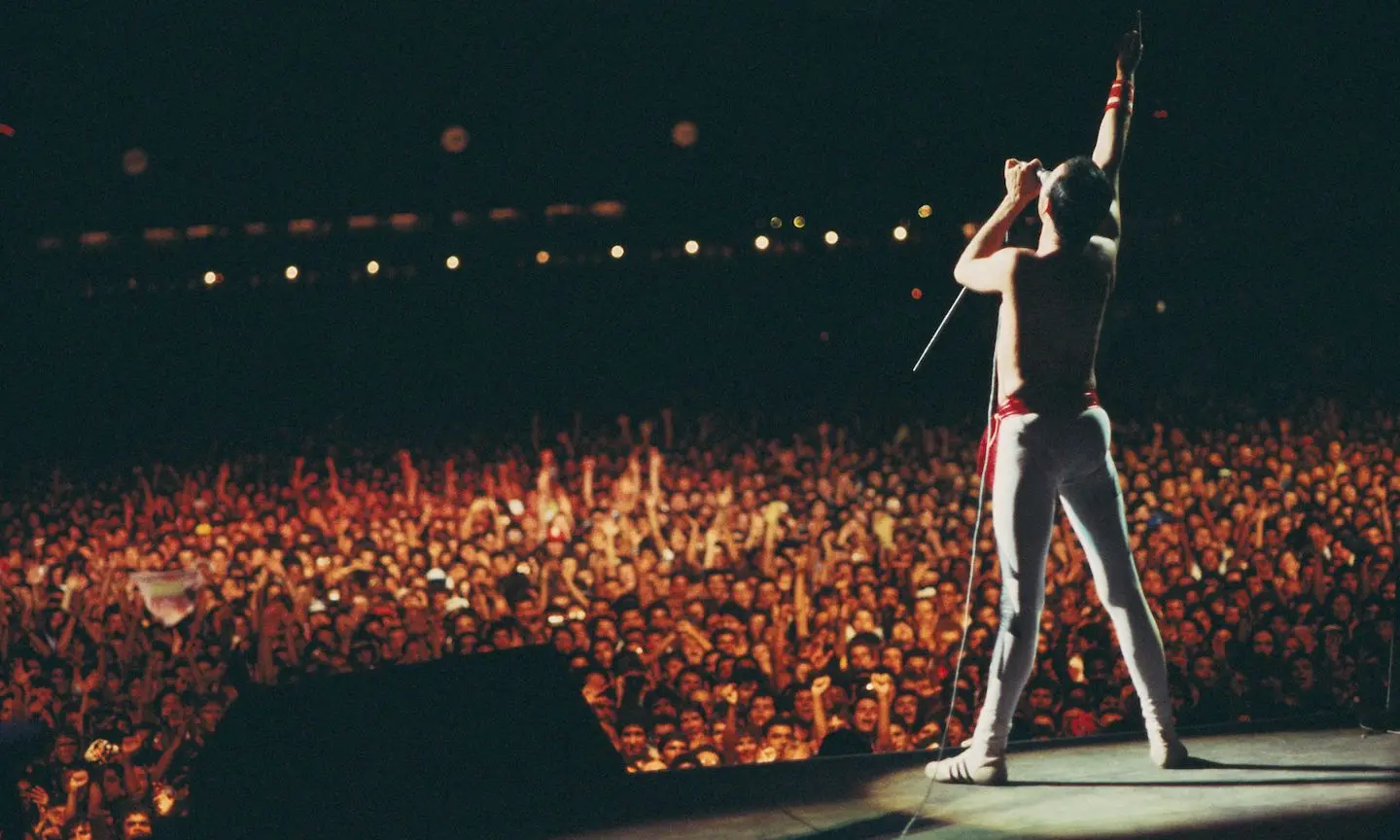
These shows proved the love affair that had been present since the early part of the decade. Queen had opened the door for Rock n Roll in 1981. However, even they couldn't believe the reception they would receive in Brazil in 1985.
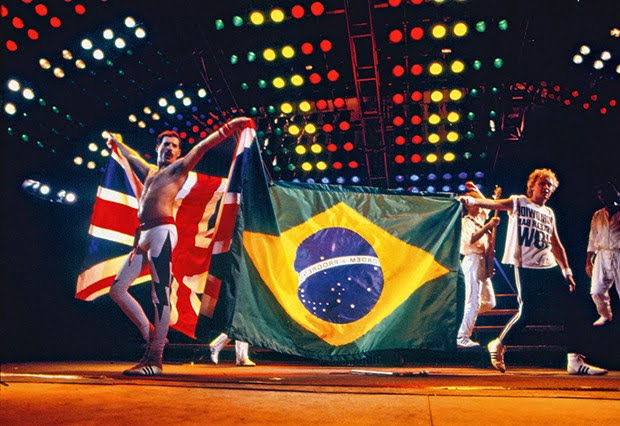
Not all of the shows on this tour received the same reception though. Queen played in South Africa at Sun City. At that time South Africa was still under apartheid. The United Nations requested entertainers to boycott the country and Britain's Musicians’ Union banned any of its members from performing in Sun City. Queen played anyway, despite the controversy.
At the time the band believed they were doing the right thing. “Throughout our career we’ve been a very non-political group,” said bassist John Deacon at the time. “We enjoy going to new places. We’ve toured America and Europe so many times that it’s nice to go somewhere different… I know there can be a bit of fuss, but apparently we’re very popular down there…basically, we want to play wherever fans want to see us.”
“We’ve thought a lot about the morals of it a lot,” guitarist Brian May said elsewhere, “And it is something we’ve decided to do. The band is not political – we play to anybody who wants to come and listen.”
However, others thought differently. Queen were fined by the British Musicians’ Union, with many fans even walking away from the band for good. Their decision was so widely condemned that even the United Nations blacklisted them, and it was a list they stayed on until apartheid finally ended in 1990.
This was one of the biggest blemish on the bands career. Taylor admitted in 2021 that the Sun City shows were a mistake. Despite going there with the best intentions. It was something that they probably shouldn't have done.
After the Rock in Rio shows, the band finished the 'The Works' tour with sold out shows in Australia and Japan.
What happened next is one of the most important musical events ever.
The Note Heard Around the World- Live Aid
Despite what 'Bohemian Rhapsody' will tell you Queen weren't on the ropes, they had finished the tour for 'The Works' and had been offered a spot at 'Live Aid'. The band were definitely apprehensive about the shows, and reluctant to accept at first.
However, they did accept and decided to rehearse their five song set. Realising that away from the 72,000 people that would be in the stadium their would be an estimated 1.9 billion watching the show across the globe via their television sets.
Queen saw this as an opportunity to show the world their music and prove to the doubters who perhaps had left them behind after 'Hot Space' or the Sun City controversy.
All of the bands performing at Live Aid had been advised by the events organiser Bob Geldof, to play the old favourites. Queen took the message, and chose the time slot of 6:41pm close to prime time in the UK and also after the live broadcast from London had gone global via satellite link.
Queen took to the stage and played a twenty one minute long performance, playing a total of six songs. Opening with a shortened version of 'Bohemian Rhapsody' and ending with 'We Are the Champions'.
During the performance of 'Radio Ga Ga' Mercury strutted around the stage, using the microphone as a prop. Mercury then led the 72,000 strong Wembley audience in some vocal call and response. As the crowd sung along to his "ay-oh" the media dubbed it 'the note heard around the world'
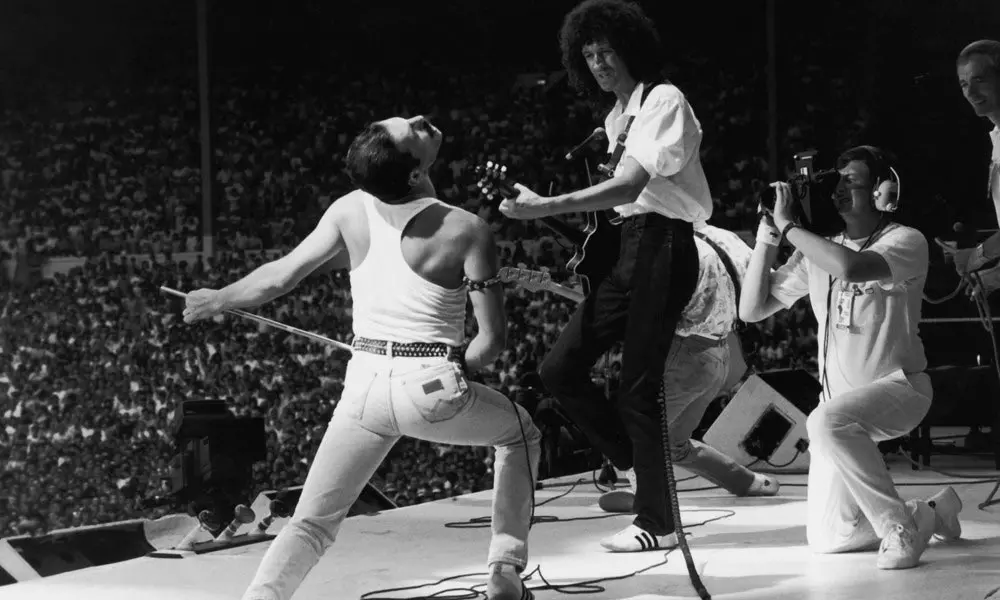
This performance had stripped Queen back to basics. Gone was the flamboyant nature of their 1970s live performances. Yet Mercury was enigmatic as he had ever been. The rest of the band executed their role perfectly, they were Mercury's foil. May has since commented on the show stating “The rest of us played okay, but Freddie was out there and took it to another level.”
Live Aid was a crowning moment in the bands career and it would be the catalyst for Queen playing in Stadiums across Europe a year later.
Who Wants to Live Forever- A Kind Of Magic
Following on from Live Aid, Queen ended 1985 by releasing the single 'One Vision' alongside a limited edition box set of all of the Queen albums up until that point. 'The Complete Works' also contained the 194 Christmas single 'Thank God It's Christmas' as well as previously unreleased material such as 'See What a Fool I've Been' and 'A Human Body'.
Queen had been writing for the fantasy action film Highlander. Some of these songs with some reworking would feature on the next Queen album. 'A Kind of Magic.'
Highlander in the end did not get an official soundtrack album in the end, and many consider 'A Kind of Magic' as the unofficial soundtrack, as six of the nine songs feature within the film.
'One Vision' became the albums first single and was written and recorded virtually straight after Live Aid. All four band members were credited with writing the song. The songs lyrics have been said t have been inspired by Martin Luther King Jr.
In the 2011 BBC documentary, Queen: Days of Our Lives, Taylor stated his lyrics were "sort of half nicked off Martin Luther King's famous speech".This song would become the opening song for the vast majority of Queen shows on the 'Magic Tour'.
'A Kind of Magic' was the albums second single, written by Taylor. The song featured as the end credits of the film Highlander. It proved to be a big hit for the band reaching Number Three in the UK Singles Chart. Taylor had begun to write some lyrics which would become the basis of both 'A Kind of Magic' and 'One Vision'. Mefcury then took over and made them both more polished. This song was still credited to Taylor as Mercury had not changed any of the lyrics, he had just given the song a more pop sheen. Taylor's version was much heavier and more rock inclined.
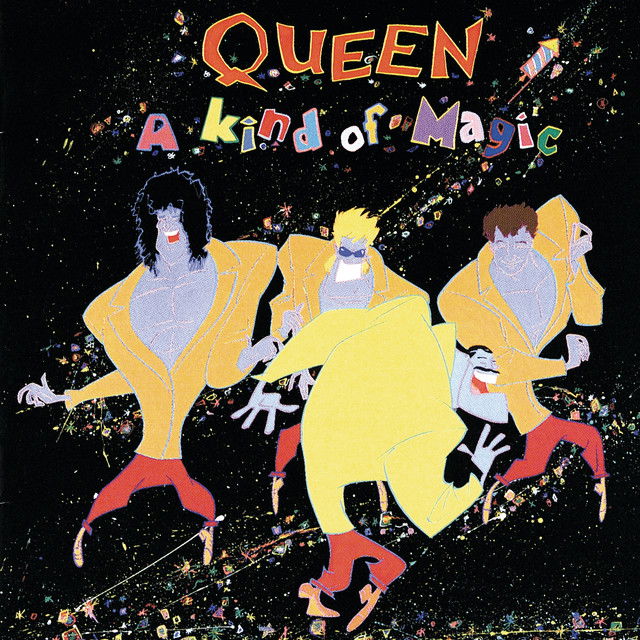
'Friends Will Be Friends' the albums third single was written by both Mercury and Deacon. Mercury penned the songs lyrics. A classic piano ballad with some similarity to earlier Queen songs 'Play the Game' and 'We Are the Champions'.
This song was played on the 'Magic Tour' and was slotted inbetween 'We Will Rock You' and 'We Are the Champions'.
The albums final single 'Who Wants to Live Forever' was composed by May, and sung as a duet between himself and Mercury. It features the band except Deacon and an orchestra which was arranged and conducted by Michael Kamen. As with all of the other singles, this song became a huge part of the setlist on the 'Magic Tour'.
'A Kind of Magic' received mixed reviews. Some had said it was not as cohesive as their other records. However others had stated it was the bands best work in some time. The singles are the best work, which can be said for most of Queens output.
Following the release of the album Queen went on a 26 date tour across Western Europe, as well as heading across the Iron Curtain to become the first Western band to perform in a Soviet controlled stat, when they played in Hungary. This tour had come of the back of Live Aid where Queen had proven themselves to be one of the best live bands.
Despite the success at Live Aid, many had uncertainty about whether Queen could sell enough tickets for the large stadiums and outdoor venues that had been booked. All of the gigs were met with some high demand. Supports for the 'Magic Tour' included the Alarm, Belouis Some, Marillion, INXS and Status Quo.
In addition to debuting new songs like "One Vision" and "Who Wants to Live Forever", the band decided to reintroduce some older tracks and an acoustic rock 'n' roll medley into their set. The final part of the show repeated the six songs Queen had played at Live Aid. The band also added a new song, 'Friends Will Be Friends', as the final encore between 'We Will Rock You' and 'We Are the Champions'
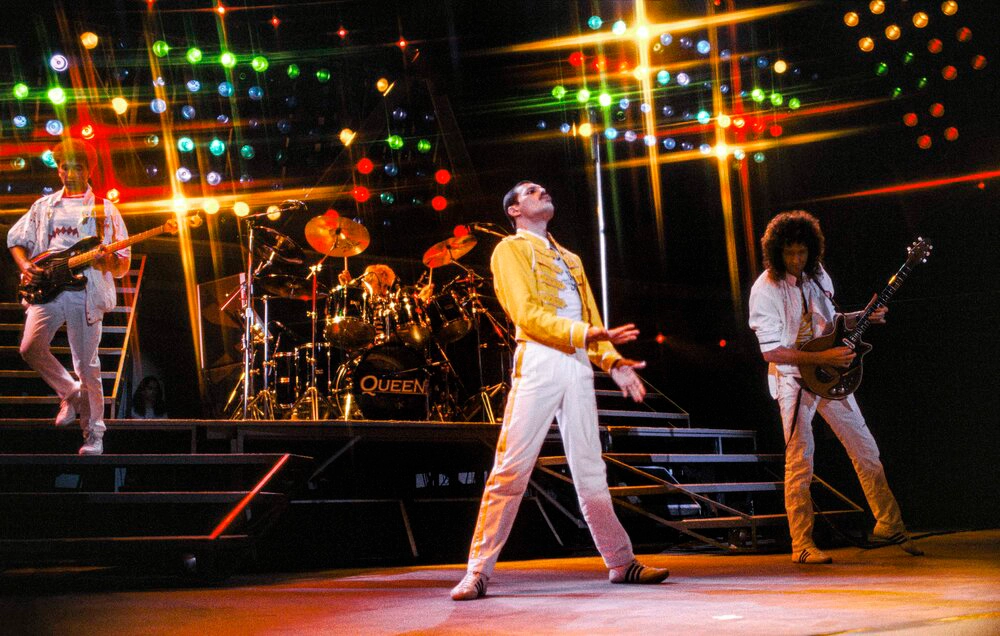
The tour began in Stockholm, before moving to Leidem, Paris, Brussels, Manheim and West Berlin. At the West Berlin show at the Waldbühne, a spontaneous version of Led Zeppelins 'Immigrant Song' was played. Shirley Bassey's 'Big Spender' was also played often on this tour, this has been a part of the bands early set lists.
Dates in Slane, Newcastle, London and Manchester followed. The concert at Slane Castle on 5 July was marred by bad weather and crowd violence. The group played St James' Park, Newcastle, on 9 July. All profits for the concert were donated to Save the Children Fund. Support band INXS were delayed because of traffic. Queen had firmly made the jump into Stadiums, the worries before the tour had started quickly dissipated. Live Aid had merely given fans a glimpse at what they could do.
Queen had to play two nights at Wembley. All 72,000 tickets for the 11 July show sold out quickly, so a second date was added for the following night. The group played for over 150,000 people over the two nights. The first was played during bad weather, but the second was clear and filmed by Tyne Tees and recorded by Capital Radio for a future television and radio broadcast.
Giant inflatable models representing the cartoon version of the group on the 'A Kind of Magic' cover were released; three were caught by the crowd, while one landed in Chelmsford approximately 35 miles away
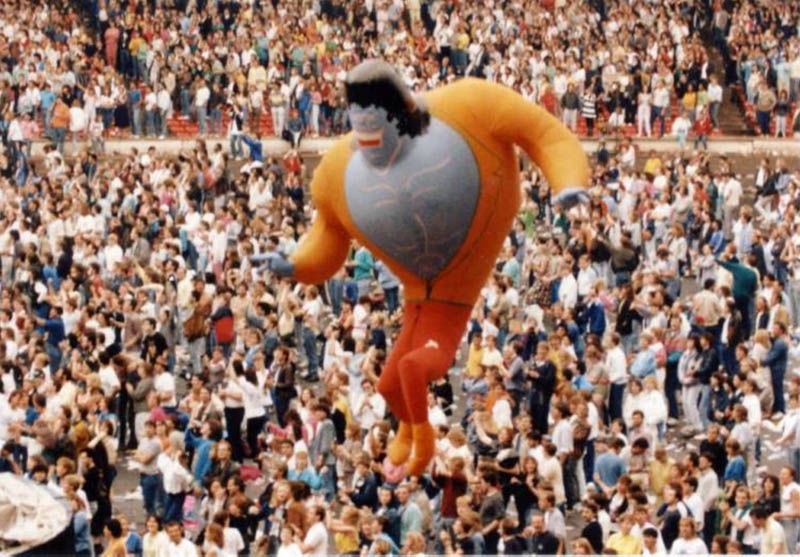
During the show Mercury addressed the audience, rumours had been circulating in the press that Queen were going to split up. At Wembley, Mercury said "we're gonna stay together until we fucking well die".
The band then headed back out across Europe to Madrid, Vienna, Barcelona and most famously Budapest. Queen's performance the Népstadion, Budapest, on 27 July was the first concert by a major rock group behind the Iron Curtain. As well as 80,000 tickets selling out, a further estimated 45,000 people listened to the group outside. Some fans had travelled from as far away as Poland to see the concert. The show was professionally filmed on 35 mm movie film by 17 of Hungary's best cameramen. The gear employed, including seventeen cameras and 25 miles of film, was all that was accessible in the country, and the Hungarian government approved the entire operation.
Due to the nights at Wembely, Queen added a further UK concert at Knebworth House, on the 9th August 1986. This would be the bands last concert with the line up of Mercury, May, Taylor and Deacon. Queen were a band operating at their peak. However, behind the scenes things had begun to change. Mercury knew he was ill. His official diagnosis of AIDS would happen a year later in 1987.
In Budapest he told a reporter that he would return to play in the city again "if I'm still alive." Then in Spain there was the throwaway remark, overheard by Brian May “John and Freddie were having a minor disagreement. And Freddie said, ‘Well, I won’t always be here to do this…’”
Whether Mercury sensed the gathering storm or merely wished to avoid the embarrassment of treading the boards as a middle-aged rock star “I know there’ll be a time when I can’t run around onstage because it’ll be ridiculous”
There was a feeling that these shows at least in the front mans mind would be his last with Queen.
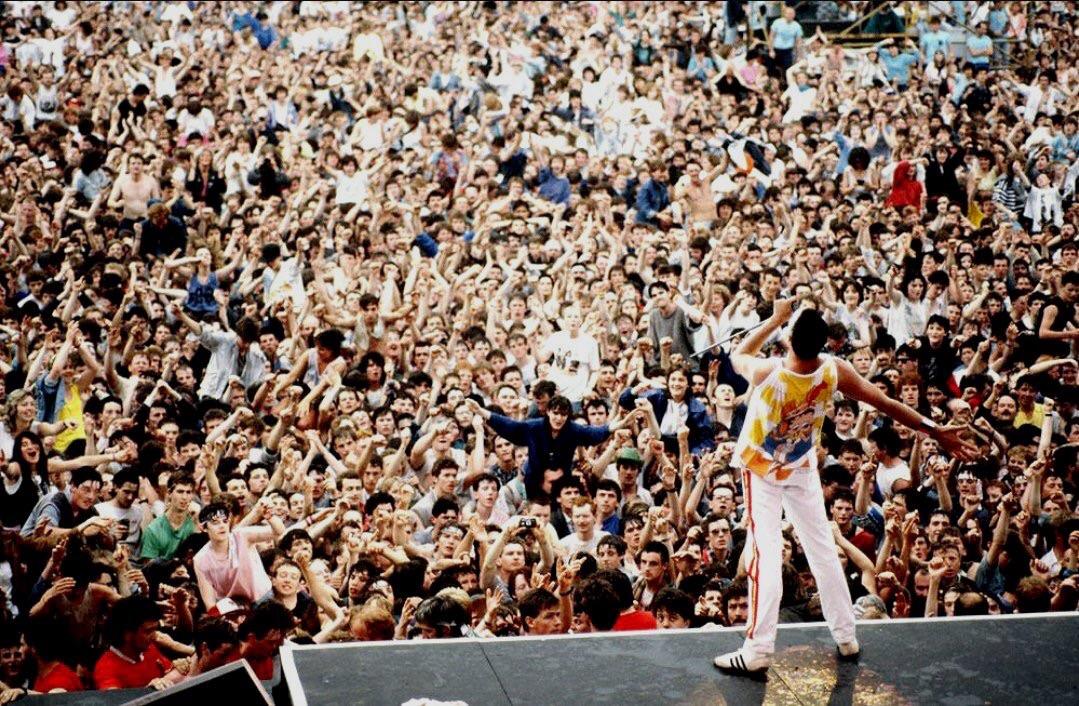
120,000 people gathered to watch the band at Knebworth, playing the same setlist as they had done for most of the tour. Grabbing the brilliant songs from every corner of their career and putting them into one of the greatest live shows. Unlike the Wembley shows which were recorded and very well documented. No one captured this concert. Freddie's last moments on stage at least officially. Bootlegs of the gig can be found. However, no proper film or audio recording was taken of the Knebworth show.
May has stated at the end of the show Freddie said ‘Oh, I can’t fucking do this anymore, my whole body’s wracked with pain!’ But he normally said things like that at the end of a tour, so I don’t think we took it seriously, really.”
Maybe they should have. This was Freddie's last live moment with Queen.
In October 1986, two months after Mercury's final live performance with Queen at Knebworth House on the Magic Tour, the British newspapers reported that Mercury had his blood tested for HIV/AIDS at a Harley Street clinic, but he was quoted as saying he was "perfectly fit and healthy".
By the Spring of 1987 Mercury had been diagnosed with AIDS. He had exhibited symptoms of HIV/AIDS as early as 1982. He did not make this public, only his inner circle were made aware of the diagnosis. It would be a number of years before the world knew.
Mercury spent some time away from Queen, he released the solo single 'The Great Pretender' and 'Barcelona' with Montserrat Caballé. Queen would reconvene in 1988 to get to work on their next album.
I Want It All- The Miracle
The album was written and recorded as the band came to terms with Mercury's AIDS diagnosis and May was dealing with Martial issues. Queen spent a whole year from January 1988 to January 1989 working on the record. 'The Miracle' reached number one in the UK, Austria, Germany, the Netherlands, and Switzerland, and number 24 on the US Billboard Top Pop Albums chart
Queen were a very different band working on 'The Miracle' they had spent time away from Queen. Brian had produced songs for various artists, Freddie recorded the Barcelona album with Spanish opera star Montserrat Caballé, and Roger founded a brand new part-time band called The Cross. The year apart would prove greatly beneficial, as everyone came to the new project with renewed vigor and an abundance of fresh ideas.
'The Miracle' saw the band decamp from Munich and head back to Montreux and also to studios in London. There was a very different feeling among the band members to, May has stated “We left our egos outside the studio door and worked together as a real band, something that wasn’t always the case with Queen.”
For the very first time all of the songs, including b-sides were credited to all four members of the band, regardless of who had actually written the song. This prevented the arguments of whose song would be chosen as a single, and whose would not. The band felt liberated, royalties were shared and the path was set for Queen to make the best album that they could.
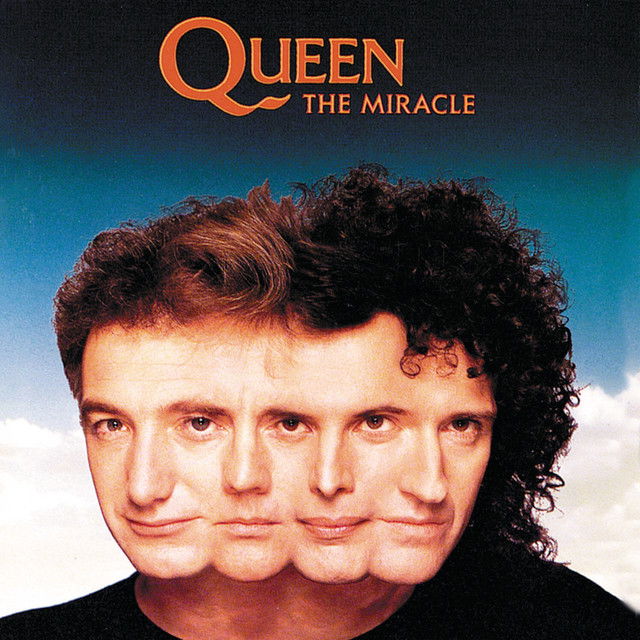
The songs on the record tackle a variety of subjects from the British Press ('Scandal') the fragility and brilliance of life as well as a belief in a higher power '(The Miracle') and the resurgence of the band and their friendship with each other ('I Want It All')
For many alongside 'The Game' this the bands best work of the 1980s. It did not divulge to far away from the Queen formula, but why did it need to.
'I Want It All' was the albums first single, it reached Number Three in the UK and Number One in various other European countries. The song became an anti-apartheid anthem in South Africa and in subsequent years has gone on to become a protest anthem. It also gave Queen something unexpected a rock radio hit in America. It peaked at Number Three on Billboard's Mainstream Rock Singles chart, but only reached Number Fifty on the Billboard Hot 100 Chart.
'The Miracle' was one of the bands complex songs to date, originally conceived by Mercury and Deacon. It talks about religion and a higher power, describing several of "God's creations, great and small", such as great buildings like the Golden Gate Bridge, the Taj Mahal and the Tower of Babel, all described as "miracles" in the song, yet the one miracle "we're all waiting for" is "peace on Earth and an end to war."
Something that has not yet happened. The music video for the song features four young boys performing as Queen on stage: Paul Howard as Brian May, James Currie as John Deacon, Adam Gladdish as Roger Taylor, and a then-unknown Ross McCall as Freddie Mercury. Throughout the video, McCall appears as four different incarnations of Mercury: 1977 Freddie (long hair with a one-piece black and white Harlequin spandex leotard), 1978-1979 Freddie (leather pants and leather jacket, and although he is portrayed with a moustache in the video, Freddie never wore his full black leather outfit with his moustache), Live Aid 1985 Freddie (white tank top, Adidas shoes, jeans), and 1986 Freddie (Iconic yellow jacket with track pants). Queen themselves appear only near the end of the video. It was filmed at Elstree Studios, Borehamwood in November 1989. According to Roger Taylor, Mercury joked about sending the boys out on tour instead of them because of how well they did in the video.
May wrote 'Scandal' about the unwanted attention that both he and Mercury were receiving from the British press. May had recently divorced his first wife, Chrissie Mullen, and his relationship with actress Anita Dobson and there was growing media speculation about Mercury's health.
Queen did not tour this record, Mercury had told the band that he did not wish to tour anymore. The band would head to the 1990 Brit Awards to collect their 'Outstanding Contribution to British Music.' award. This would be Mercury's final public appearance.
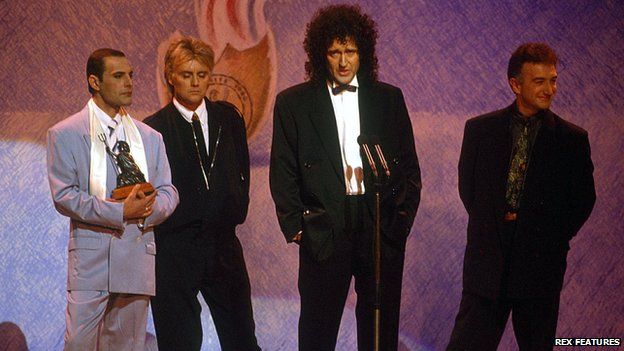
Freddie uttered three words to the audience that night, as the band walked off stage, he quietly stepped up the microphone and said "Thank you... goodnight."
For many this was the last time they would see Freddie, he and Queen would continue to record music. However, after this event Mercury retreated behind a wall of close friends and family. The public did not have to read what the band had called hearsay and gossip in the tabloids. Mercury's fragile figure and gaunt appearance were there for the nation to see. The rumours were confirmed, Freddie was sick.
The Show Must Go On- Innuendo
After the Brits, Queen headed back into the studio. This time the band were recording for over a year. Recording started in March 1989 and carried on until November 1990. Mercuty was determined to keep working saying to close friends that he would "keep working until I fucking drop".
After constantly being bothered by newspaper journalists and reporters in London. The band relocated to the Mountain Studios in Montreux. Which allowed the band to focus on making a record. Similarly to 'The Miracle' the band decided that all work would be again credited to Queen as a whole instead of to individual contributing members
The album reached the No. 1 spot on the UK album charts for two weeks, and also peaked at No. 1 in Italy, the Netherlands, Germany, and Switzerland, staying at No. 1 for three weeks, four weeks, six weeks, and eight weeks, respectively. It was the first Queen album to go Gold in the US upon its release since The Works in 1984.
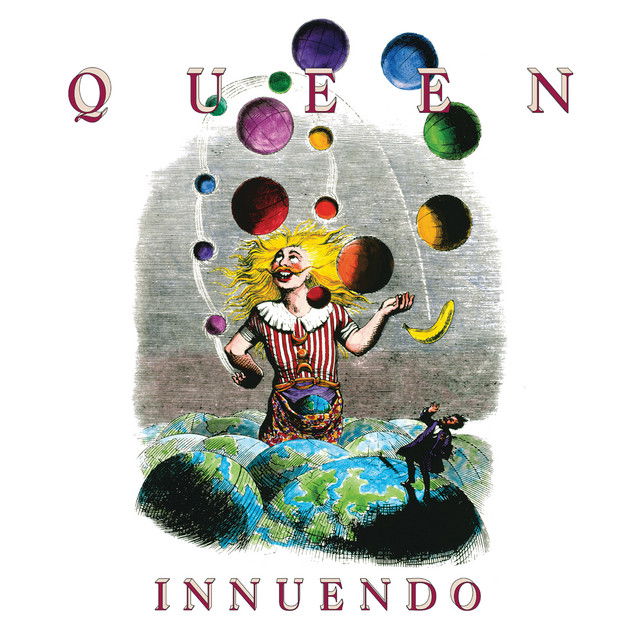
The albums first single and title track 'Innuendo' began as a jam session between May, Taylor and Deacon in spring 1989. Mercury heard this and began to work on a song, creating the melody and writing some lyrics. All four members then got to work with Taylor taking particular focus on the lyrics. The songs lyrics are a tribute to Led Zeppelin and in particular the song 'Kashmir'. Mercury then wrote and added the middle section, this section featured a synth orchestra programmed by the albums producer (David Richards) and a flameco interlude played by Yes guitarist Steve Howe.
Upon it's release the song debuted at Number One. Giving the band a Number One in the 1990s, a fete they had achieved in the two previous decades.
Mercury wrote the albums second single 'I'm Going Slightly Mad' inspired by the comedian Noel Coward. This was one of the first songs the band worked on in Montreux. In the songs video Mercury dressed in a costume suit with wild hair, white gloves, long pointing shoes and extremely heavy make up, filmed in black and white. Whilst Queen fans were thoroughly amused by the band in the video, in the documentary, Champions of the World, Taylor confessed, from the band's perspective, the video was marred by Mercury's appearance having to be camouflaged by costume and make-up, as Taylor admitted Mercury looked "pretty ill, at that point."

'Headlong' was written by May who intended to use the song for a solo album. However, when he heard Mercury sing it, it was always destined to become a Queen song. Released in May 1991, it entered the UK singles chart at Number Twenty Eight in its first week and peaked at Number Fourteen during the following week. In total the song spent 3 weeks within the UK Top 40.
'These Are the Days of Our Lives' was written by Taylor. Keyboards were programmed by all band members in the studio, and conga percussion was recorded by David Richards. The music video for this song was Mercury's last appearance in a video medium, and with his knowing farewell look straight at the camera, Mercury whispers "I still love you" at the end of the song. By the time the video was made, it had become impossible to disguise that Mercury was seriously ill. The video was filmed in colour, but converted to black and white to minimise Mercury's frail appearance
'The Show Must Go On' was written by May, based on a chord sequence he had been working on. May decided to use the sequence, and both he and Mercury decided the theme of the lyrics and wrote the first verse together. From then on May finished the lyrics, completed the vocal melody and wrote the bridge, inspired by Pachelbel's Canon. Some keys and ideas were also suggested by the producer. The song chronicles the effort of Mercury continuing to perform despite approaching the end of his life.
The video for the song featured a compilation of clips from all their videos since 1982, in support of the Greatest Hits II album. Due to Mercury's critical health at the time of its production, a fresh appearance by the band in a video was not possible. The song was released in October 1991, the lyrical content and the nature of the songs music video continued the long running media reports that Mercury was seriously ill. He and the band continued to deny these rumours.
On the 23rd November, Freddie told he world. In a statement released by his publicist Roxy Mendes. He said this.
"Following enormous conjecture in the press, I wish to confirm that I have been tested HIV positive and have AIDS," he said in his statement.
"I felt it correct to keep this information private in order to protect the privacy of those around me.
"However, the time has now come for my friends and fans around the world to know the truth, and I hope everyone will join with me, my doctors and all those worldwide in the fight against this terrible disease."
24 hours later Mercury was dead. he cause of death was bronchial pneumonia resulting from AIDS. He was 45 years old.
Mercury's funeral service was conducted on 27 November 1991 by a Zoroastrian priest at West London Crematorium, where he is commemorated by a plinth under his birth name. In attendance at Mercury's service were his family and 35 of his close friends, including Elton John and the members of Queen.
In accordance with Mercury's wishes, Mary Austin took possession of his cremated remains and buried them in an undisclosed location. The whereabouts of his ashes are believed to be known only to Austin, who has said that she will never reveal them.
After his death Queen re-released 'Bohemian Rhapsody' as a Double A-Side with 'These are the Days of Our Lives'. The single went to number one in the UK, remaining there for five weeks—the only recording to top the Christmas chart twice and the only one to be number one in four different years (1975, 1976, 1991, and 1992)
On 20 April 1992, The Freddie Mercury Tribute Concert was held at London's Wembley Stadium to a crowd of 72,000. Performers, including Def Leppard, Robert Plant, Tony Iommi, Roger Daltrey, Guns N' Roses, Elton John, David Bowie, George Michael, Annie Lennox, Seal, Extreme, and Metallica performed various Queen songs along with the three remaining Queen members (and Spike Edney.)
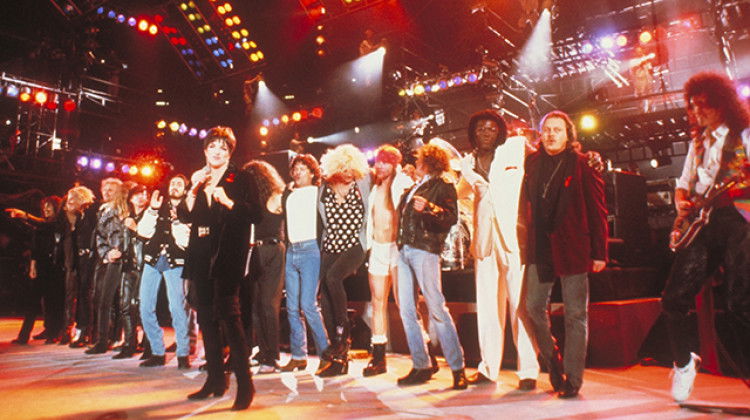
Too Much Love Will Kill You- Made in Heaven
Queen released one more album with contributions from Mercury, 'Made in Heaven'. Taylor, May and Deacon worked on the material from the final recording sessions with Mercury in 1991, songs left over from previous albums and re-worked material from solo albums.
Work for this album both before and after Mercury's death were completed in Montreux. Mercury had wanted to complete as many vocal takes as he could, he gave the instruction to May, Taylor and Deacon to complete the songs later. In 2013, Brian May said about the album " Made in Heaven was possibly the best Queen album we ever made. It has so much beauty in it. It was a long, long process, painstakingly put together. A real labour of love."
'Let Me Live' features May, Mercury, and Taylor sharing vocal duties and was originally demoed with Rod Stewart during sessions for 'The Works'. The band also use a choir on this song providing a gospel sound reminiscent of the band's 1976 single 'Somebody to Love'. The single reached No. 9 in the UK Single Charts, becoming the band's last Top 10 hit in that country.
'Mother Love' which features on 'Made in Heaven' is the last vocal recording Mercury ever made, which he completed using a drum machine, over which May, Taylor and Deacon later added the instrumental track. After completing the penultimate verse, Mercury had told the band he "wasn't feeling that great" and stated, "I will finish it when I come back, next time". Mercury never returned to the studio afterwards, leaving May to record the final verse of the song. The song features a sample of the vocal improvisation from Queen's famous 12 July 1986 concert at Wembley Stadium, and a sample from the intro of the studio version of 'One Vision' and 'Tie Your Mother Down'.
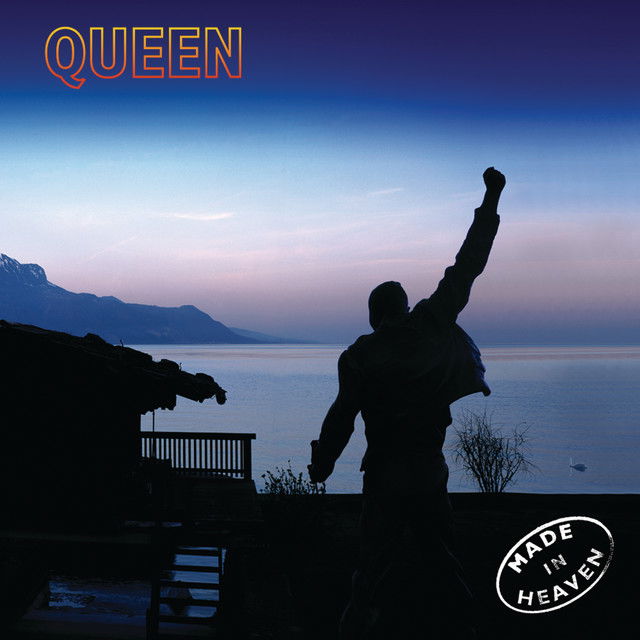
'Too Much Love Will Kill You' was originally intended to be on 'The Miracle' but did not make the cut due to the band's decision that all songs on the album would be written by the group as opposed to individuals. Originally recorded in 1989 by Queen and then released by May. Queen elected to put the version with Freddie's vocals on 'Made In Heaven'. Despite failing to replicate chart success of May's solo version, Queen's version of the song has since come to be regarded as the definitive version.
The album was a fitting swan song for one of Britain's best ever bands. A real labour of love by the surviving members of Queen to write the last will and testament of a star who was performer all the way to the end.
The album reached number one in the UK following its release, their ninth number one album, and sold 20 million copies worldwide. On 25 November 1996, a statue of Mercury was unveiled in Montreux overlooking Lake Geneva, almost five years to the day since his death.
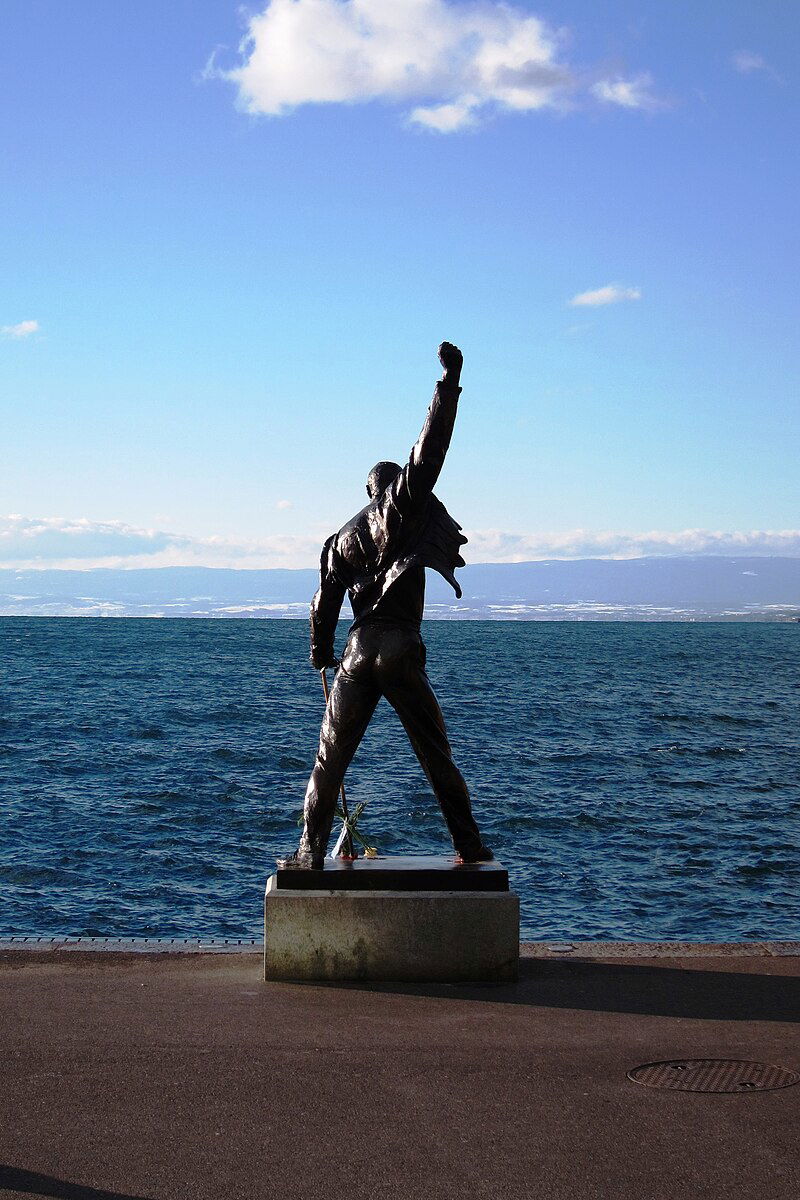
In 1997, Queen returned to the studio to record 'No-One but You (Only the Good Die Young)', a song dedicated to Mercury and all those who die too soon. It was released as a bonus track on the Queen Rocks compilation album later that year, and features in Greatest Hits III
In January 1997, Queen performed "The Show Must Go On" live with Elton John and the Béjart Ballet in Paris on a night Mercury was remembered, and it marked the last performance and public appearance of John Deacon, who chose to retire. The Paris concert was only the second time Queen had played live since Mercury's death, prompting Elton John to urge them to perform again.
Deacon was deeply saddened by the death of Mercury and said these words "As far as we are concerned, this is it. There is no point carrying on. It is impossible to replace Freddie."
The other two should have listened to him.
The Queen story ended in 1997. I know that Brian May and Roger Taylor have continued using the Queen name in various different forms, but is it really the same band. You cannot replace a front man, and you can definitely not replace Freddie. It's impossible. So why try and imitate a version of Queen.
It baffles me.
Thank you for reading
Jack